#arguably one of the best castings for a character in cinema history
Text
we all love how much of a zesty fruitloop shang tsung is in mk1,,,
but let's not forget who started that whole zesty persona:
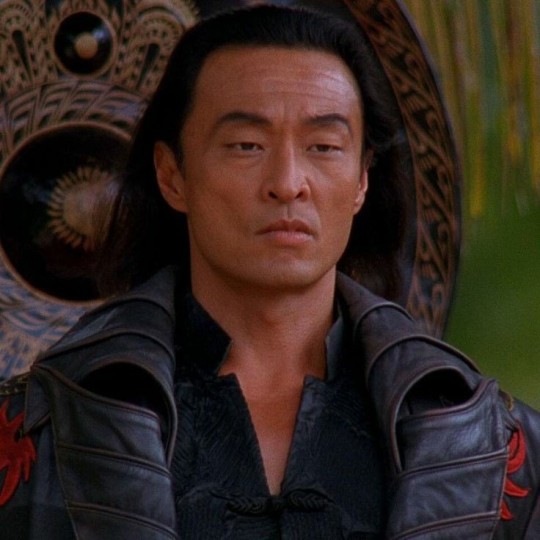
#he was the blueprint#if you don't know who this is im sorry#there has never been a better casting for a single video game character since this movie#arguably one of the best castings for a character in cinema history#carry hiroyuki tagawa#shang tsung#mortal kombat movie (1995)#mortal kombat 1#mk1#mk1 shang tsung#mortal kombat
197 notes
·
View notes
Text
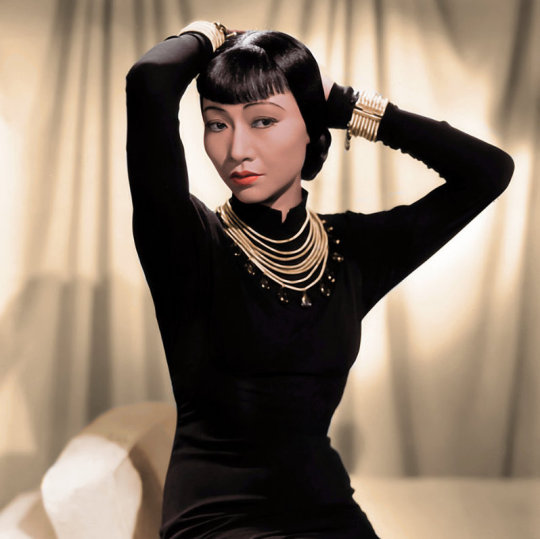
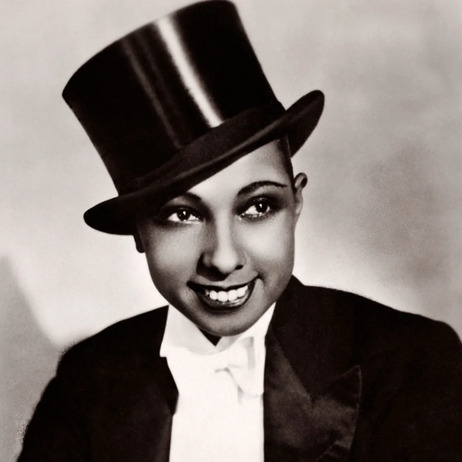
Propaganda
Anna May Wong (The Thief of Bagdad, Shanghai Express)—Wong was the first Chinese American movie star, arguably the first Asian woman to make it big in American films. Though the racism of the time often forced her into stereotypical roles, awarded Asian leading roles to white actors in yellowface, and prohibited on-screen romance between actors of different races, she delivered powerful and memorable performances. When Hollywood bigotry got to be too much, she made movies in Europe. Wong was intellectually curious, a fashion icon, and a strong advocate for authentic Asian representation in cinema. And, notably for the purposes of this tournament, absolutely gorgeous.
Josephine Baker (The Siren of the Tropics, ZouZou)— Josephine Baker was an American born actress, singer, and utter icon of the period, creating the 1920s banana skirt look. She was the first black woman to star in a major motion film. She fought in the French resistance in WWII, given a Legion of Honour, as well as refusing to perform in segregated theatres in the US. She was bisexual, a fighter, and overall an absolutely incredible woman as well as being extremely attractive.
This is round 6 of the tournament. All other polls in this bracket can be found here. Please reblog with further support of your beloved hot sexy vintage woman.
[additional propaganda submitted under the cut.]
Anna May Wong propaganda:

"She so so gorgeous!! Due to Hollywood racism she was pretty limited in the roles she got to play but even despite that she’s so captivating and deserves to be known as a leading lady in her own right!! When she’s on screen in Shanghai Express I can’t look away, which is saying something because Marlene Dietrich is also in that film."
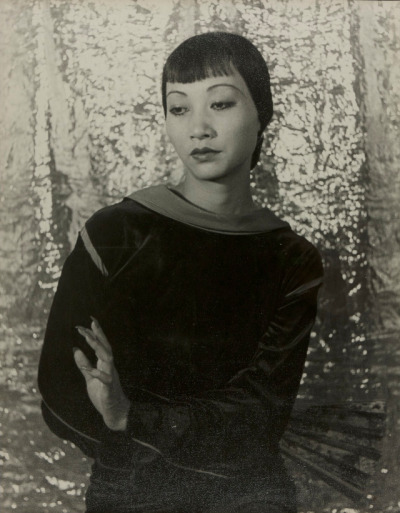
"SHE IS ON THE BACK OF QUARTERS also she was very smart and able to speak multiple languages and is a fashion icon on top of the acting/singing"
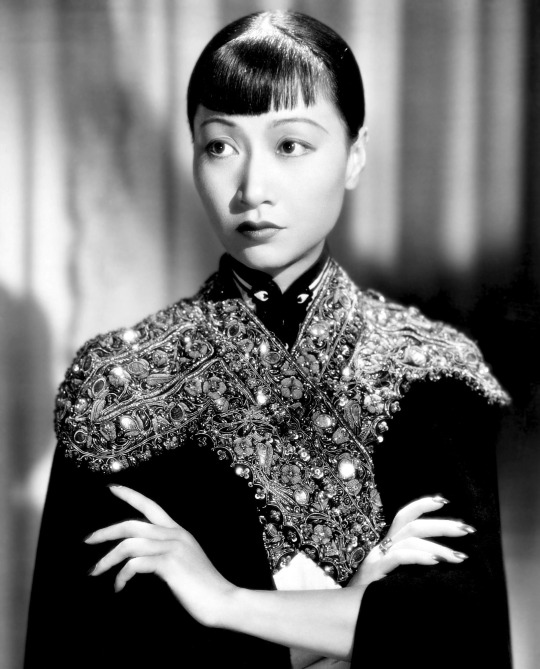
"Paved the way for Asian American actresses AND TOTAL HOTTIE!!! She broke boundaries and made it her mission to smash stereotypes of Asian women in western film (at the time, they were either protrayed them as delicate and demure or scheming and evil). In 1951, she made history with her television show The Gallery of Madame Liu-Tsong, the first-ever U.S. television show starring an Asian-American series lead (paraphrased from Wikipedia). Also, never married and rumor has it that she had an affair with Marlene Dietrich. We love a Controversial Queen!"

"She's got that Silent Era smoulder™ that I think transcends the very stereotypical roles in which she was typically cast. Also looks very hot smouldering opposite Marlene Dietrich in "Shanghai Express"; there's kiss energy there."

"Hot as hell and chronically overlooked in her time, she's truly phenomenal and absolutely stunning"
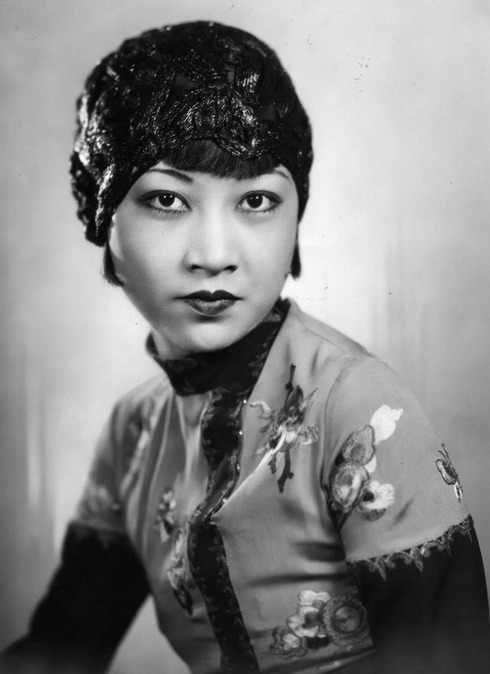
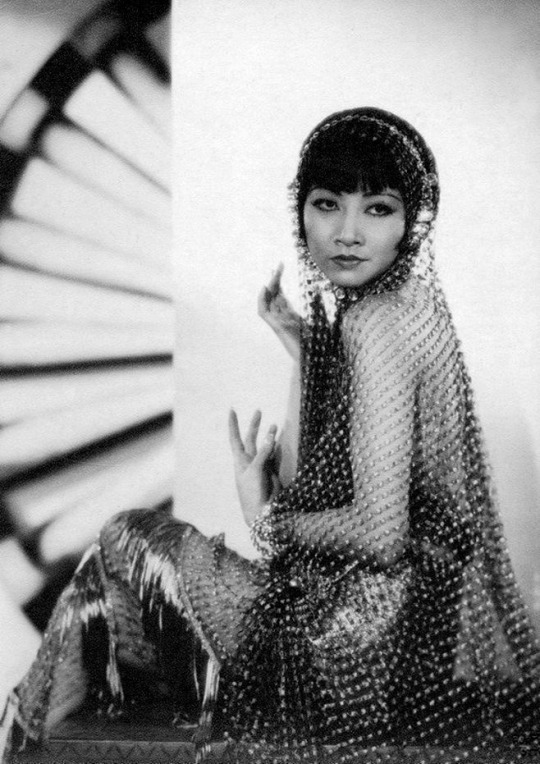
"A story of stardom unavoidably marred by Hollywood racism; Wong's early-career hype was significantly derailed by the higher-up's reluctance to have an Asian lead, and things only got worse when the Hayes code came down and she suddenly *couldn't* be shown kissing a white man--even if that white man was in yellowface. After being shoved into the Dragon Lady role one too many times, she took her career to other continents for many years. Still, she came back to America eventually, being more selective in her roles, speaking out against Asian stereotypes, and in the midst of all of this finding the time to be awarded both the title of "World's Best Dressed Woman" by Mayfair Mannequin Society of New York and an honorary doctorate by Peking University."
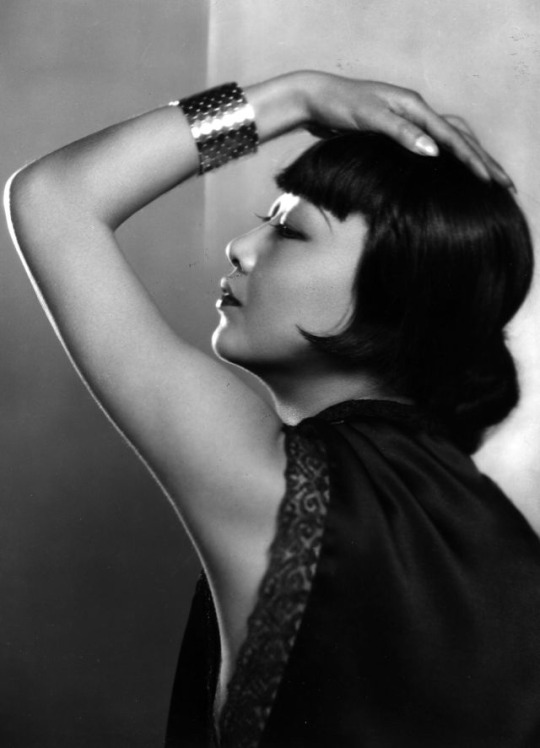
"Incredible beauty, incredible actress, incredible story."
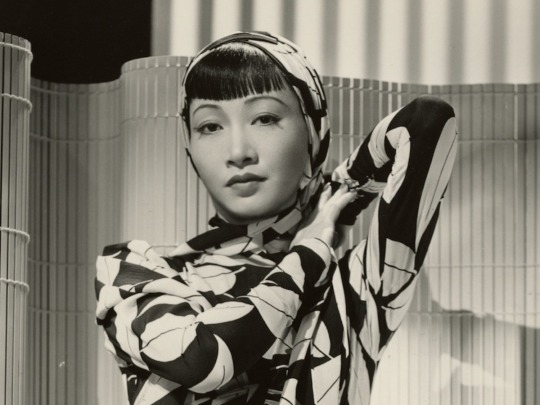
"-flapper fashion ICON. look up her fits please <3 -rumors of lesbianism due to her Close Friendships with marlene dietrich & cecil cunningham, among others -leveraged her star power to criticize the racist depictions of Chinese and Asian characters in Hollywood, as well as raise money and popular support for China & Chinese refugees in the 1930s and 40s. -face card REFUSED to decline"
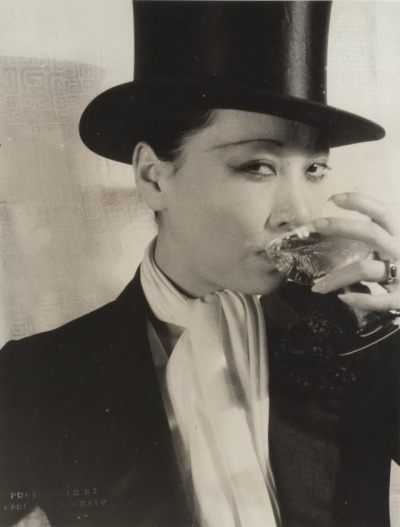
Josephine Baker:

Black, American-born, French dancer and singer. Phenomenal sensation, took music-halls by storm. Famous in the silent film era.
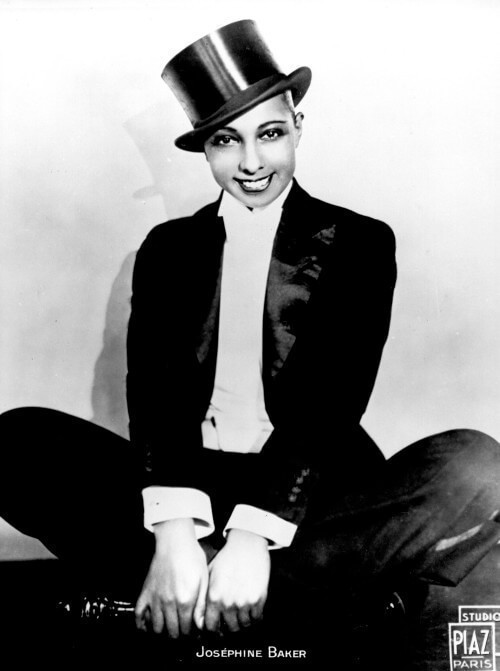
Let's talk La Revue Negre, Shuffle Along. The iconique banana outfit? But also getting a Croix de Guerre and full military honors at burial in Paris due to working with the Resistance.
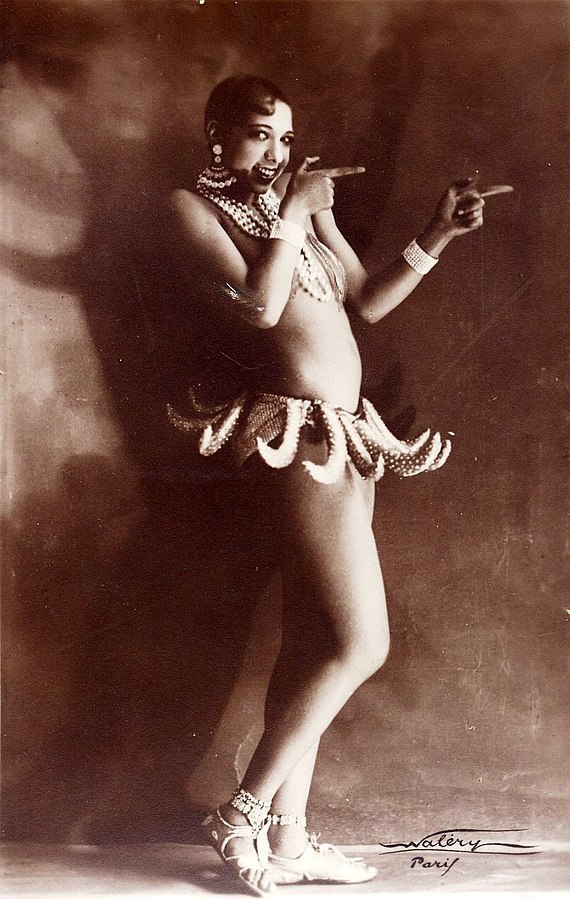
She exuded sex, was a beautiful dancer, vivacious, and her silliness and humor added to her attractiveness. She looked just as good in drag too.

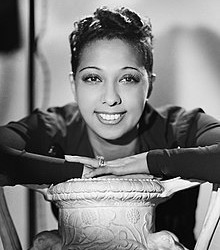

So I know she was more famous for other stuff than movies and her movies weren’t Hollywood but my first exposure to her was in her films so I’ve always thought of her as a film actress first and foremost. Also she was the first black woman to star in a major motion picture so I think that warrants an entry

Iconic! Just look up anything about her life. She was a fascinating woman.

588 notes
·
View notes
Text
Film #728: ‘Fanny and Alexander’, dir. Ingmar Bergman, 1982.
It's not often I have to start one of these analyses by looking at the question 'What is cinema?' but Ingmar Bergman's filmography is so dense and wide-ranging that it was bound to happen sooner or later. His 1982 magnum opus Fanny and Alexander was originally imagined as a television miniseries and produced in a five-hour version, which was cut down to 188 minutes for a cinematic release. The longer miniseries was released subsequently. According to the book, the version under discussion is the 188-minute cinematic cut, although reading up about the film there are some details from the five-hour version that I think are particularly illuminating. It's arguable that referring to these details (from an extended cut I haven't seen, no less!) is like citing page numbers from Tolkien when talking about Peter Jackson's Hobbit films, but this is my blog, so I'm not going to wade into the reeds on this one.
Anyway, the reason the provenance of Fanny and Alexander feels a little more relevant is because Scandinavia has a rich history of crossover between film and television, with some of its most prominent directors working in television drama production as well as releasing feature films. With the rise of streaming services and prestige television this distinction is a little less important, but to the best of my knowledge Martin Scorsese has never directed an episode of Masterpiece Theater, which is the best analogy I could come up with. Bergman is a director who has clearly given deep thought to the differences between structuring, themes and acting for television and feature film, and the end result is that the three-hour cinematic release feels like three one-hour episodes chained together. The same characters, and an ongoing narrative, but strikingly different themes and tones across each of them.
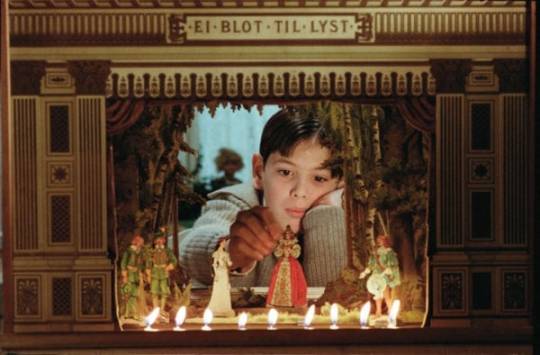
The first hour introduces our protagonist, Alexander (Bertil Guve), a boy with a feverish imagination. In the first few moments of the film we already see through his eyes a statue moving, and we can get an instant sense of his creativity, but also some of the emotional myopia specific to children - Alexander is withdrawn and distant when he pleases and recklessly dishonest when he pleases, and is constantly blindsided by how others react to his behaviour. This first 'episode' takes place on a busy Christmas Eve as the entire Ekdahl clan gathers at the home of the grandmother Helena (Gunn Wållgren, in her final performance). Helena acts as the emotional centre of the family for the majority of the film, and right from the beginning we often see the other family members considering their own actions in relation to what Helena would think. Some of these characters are drawn in great detail to prepare us for their appearances later: the romance between the married Gustav Adolf (Jarl Kulle) and the family's maid, Maj (Pernilla August) is an ongoing plot, for example. Other characters are carefully drawn, such as Carl, the philosopher, who hates himself for hating his wife, and who only seems happy entertaining the children with his performative farting - but Carl only appears in this section of the film. Bergman is drawing a rich cast of characters that give the world a feeling of population; an intricate web of relationships.
Alexander's father, Oscar (Allan Edwall) gives a rousing Christmas speech to the employees at the theatre he operates, focusing on the differences between the 'little world' of the playhouse and the 'bigger world' outside. He observes that the theatre sometimes succeeds at reflecting the real world, but that the theatre is also an opportunity to escape those real cares - a theme that will be repeated at the end of the film.
Our second episode shifts the focus a little smaller, to the relationship between Alexander and his immediate family. Oscar dies of a stroke while rehearsing the role of the Ghost in Hamlet, and his mother Emelie (Ewa Fröling) is immediately wooed by the local bishop, Edvard (Jan Malmsjö). Emelie immediately learns she has made a mistake when Edvard is strict and controlling towards her and the children, demanding they rid themselves of their possessions and limit their contact with her family. Seemingly out of a mix of retaliation and grief, Alexander's lies and fantasies become more outlandish, culminating in his telling Edvard's maid that he saw the ghosts of Edvard's former wife and children, who announced that Edvard was responsible for their deaths. The maid immediately tells Edvard who, while Emelie is away secretly visiting her family, punishes Alexander and confines him to the attic.
Emelie seeks help from her family, and salvation comes in the form of Isak Jacobi, a local pawnbroker and old flame of Helena. Isak smuggles the children out of the house while Emelie, who is now pregnant with Edvard's child, remains.
The focus is narrowed once more in the third episode, which almost exclusively revolves around Alexander's stay with Isak and his nephews. One is a master puppeteer and the other is a mysterious invalid who seems to have the ability to control the minds and actions of others (I say 'seems' because the film is quite deliberately vague on this point - a decision I'll come back to later). The two nephews either cajole or enable Alexander to bring about the death of the bishop, partially in conjunction with Emelie's decision to heavily sedate her husband so she can leave. The death of the bishop means that Alexander, Fanny and their mother can return to their extended family once more, and the film ends at a lunch celebrating a double christening: Maj's child with Gustav Adolf, and Emelie's child with the deceased Edvard. Gustav Adolf gives a speech which is quite similar to Oscar's in the first hour of the film, extolling the importance of actors in distracting us from life's problems.
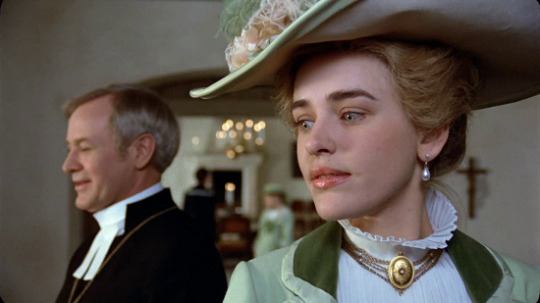
The fact that the film opens and closes with similar speeches about the role of theatre in life is telling, because Fanny and Alexander feels like a drawing-room theatre trilogy. Many of the films on the list have drawn their similarities to theatre in an explicit way (think of The Golden Coach, which uses a theatre as a framing device, or Diva, which begins and ends with diegetic opera performances on a stage), but Bergman is working on a slightly more implicit and thematic level. His film is full of literal actors and literal performances, sure, but he also encourages us to think about life through the lens of these performances, rather than just the performances per se.
Here's an example: Oscar's death happens during a rehearsal of Hamlet, in which Oscar is playing the role of the ghost of Hamlet's father. Alexander is in the audience for this rehearsal, and witnesses his father's collapse. The rest of this act plays with the tropes of Hamlet. Alexander is haunted, but not by the ghost of his father (the person who sees Oscar's ghost in this act is Helena). Rather, Bergman uses the trope of 'a ghost attesting to a wrongful death' - Alexander claims to see ghosts who accuse the bishop. A hasty marriage following the death of the protagonist's father is also central to this act, but the causality of it is out of kilter with the narrative being put right in the foreground. Either Bergman, or Alexander, or maybe both, is trying to make life make sense by recycling parts of Shakespeare's play, but none of the pieces quite fit together. At the end of the film, the bishop has been killed, but unlike Hamlet, Alexander stays alive, and the implication instead is that he will forever be haunted by the bishop.
But why should he be? I think it's pretty illuminating from a thematic point of view that at no stage do we really get confirmation of whether the ghosts that Alexander sees are real (at least in this version - in the five-hour version we apparently see the ghosts too, but I can't determine whether we see them in real-time or if they're only show through the frame of a story Alexander tells). The behaviour of the bishop in response to Alexander's accusations is interesting, because Jan Malmsjö plays his role with the menace that makes you believe he could be capable of such a thing. One of three possibilities is true: that the bishop killed his wife and children and the ghosts are real, that the bishop didn't and the ghosts are fictions dreamed up by Alexander, or that Alexander imagines the ghosts and yet has lucked into revealing the truth about the bishop. Bergman doesn't come down strongly on this question, and even the reveal at the end that the bishop's ghost now haunts Alexander doesn't help matters one way or the other. All of these explanations are plausible - either the result of a legitimate haunting or the fevered imagination of a guilt-ridden child.
The same questions arise again when the bishop dies. At least according to what the film tells us is true, the following happens: the bishop's bedridden aunt draws a kerosene lamp closer to her, it topples and sets her alight, and then she fatally injures the heavily-sedated bishop in her attempts to get help. It appears, according to the narrative, that the aunt pulls the lamp closer under the influence of either the puppeteer, who is seen drawing a light closer directly juxtaposed with the aunt doing the same, or under the influence of the other nephew, guiding Alexander to unleash his most destructive psychic impulses. Again, though, both these supernatural explanations are in conflict with the natural explanation.
Whichever of the explanations for these events Bergman wants us to believe is true, it is apparent that these imaginative explanations aren't a lot of help to Alexander: most of the time, in fact, they make things worse. It ultimately doesn't matter too much whether Alexander sees real ghosts or simply imagines them, whether he says so out of childishness or malice: his punishment for claiming to see them is real either way. If Alexander believes himself to be enacting a skewed version of Hamlet's story, the lessons of the play don't benefit him at all. At the end of the film, with the bishop dead (and his death shown in excruciating detail in a flashback), the stories that Bergman uses to try and make sense of the world are shown to be of little help. That brings us back to the speeches that Oscar and Gustav Adolf give, with Gustav Adolf in particular imploring the family, "Don't be sad, dear splendid artists - actors and actresses, we need you all the same. You are there to provide us with supernatural shudders... or even better, our mundane amusements."
What this speech doesn't tell us art and theatre can do is solve problems. It tells us stories of power and the supernatural, but Bergman's film is refreshingly pragmatic when it tells us that art is not powerful or supernatural in itself. It is fiction, and even when it is telling us that amazing things are possible, that doesn't make the amazing things the story depicts any more real than if it said they were impossible.
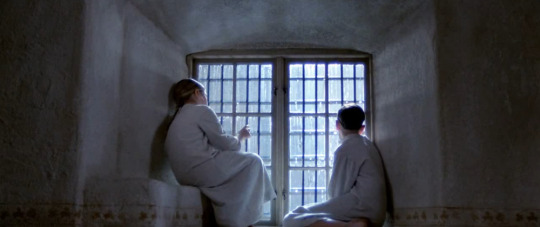
Fanny and Alexander does seem to have one moment that displays an outright impossible thing. When Isak smuggles the children out of Edvard's house, he hides them in a chest he has offered to purchase from the bishop. He sneaks them into the chest and covers them with a small cloth - clearly too small to adequately hide them. The bishop catches on to Isak's plot, and throws the chest open, but does not see the children inside. He runs upstairs to try and locate them, while Isak falls to his knees and screams in frantic, rageful prayer. Upstairs, Edvard finds the children lying on the floor, still and rigid, but Emilie screams at Edvard not to touch them, and Edvard obeys. The children, apparently still in the chest, are meanwhile snuck out of the house.
What on earth are we to make of this? The film doesn't otherwise give us any reason to believe in the power of God, either from a Christian or Judaic perspective (and it's very difficult to tell if Bergman is drawing on particular strands of Jewish mysticism or just general Semitic stereotypes). I've been influenced here by another blog, Seeing Things Secondhand, whose author is, I believe, an English teacher in the States. Writing about Bergman's work as a whole, he says "God has been uncaring (The Seventh Seal), impotent (The Virgin Spring), terrifying (Through a Glass Darkly), missing (The Silence). Here he is a puppet of man." Isak, and the nephews, Aron and Ismael, evoke God's power to their own ends, and it is always imbued with a hint of menace. After all, if you have access to this type of power, what wouldn't you use it for?
The power Isak and his nephews wield might be real, it might be explained away by a complicated chain of causes, but either way it's not something that the Ekdahl clan has access to. What they have is far more toothless but it is also not tinged with threat at every turn. Isak in particular, straddling the world of the Ekdahls and the world of mysticism, seems like a genial old man who should not be pushed to extremes. In comparison, the rest of the family, as turbulent as their lives are, seem ever-gentle. And that's okay. Their job in the theatre isn't to solve problems, but just to tell us stories.

Fanny and Alexander raises constant interesting questions, then, but the story that it tells across its epic runtime floats, barely tethered, above them. Rick Moody, writing for Criterion and wondering about how autobiographical the film is, suggests that the solution to a film like this is just "to realize that it is the interrogatives of which life is composed. Maybe Fanny and Alexander is simply an autobiographical yarn as Alexander would tell it, so that Bergman and Alexander now appear to us to be one and the same narrator of the tale. Maybe Alexander is Bergman refracted, in this instance in the convex mirror of art, where strange happenstances are routine and tidy answers are hard to come by. Or maybe Bergman is somehow Alexander’s own dream, from which the boy has yet to wake."
That wording resonates with the final scene of the film, in which Emelie presents Helena with the script for the next play the theatre intends to present, August Strindberg's A Dream Play. Sitting down with Alexander resting his head on her knee, Helena begins to read: "Anything can happen. Anything is possible and likely. Time and space do not exist..." It's an oddly comforting conclusion, freeing the characters and the audience from the expectation that anything must be explained. All that needs to happen is for us to watch and to narrate, and life will go on in that gentle way.
12 notes
·
View notes
Photo
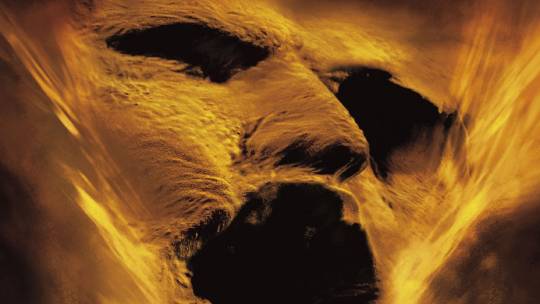
In Focus: The Mummy
Dominic Corry responds on behalf of Letterboxd to an impassioned plea to bump up the average rating of the 1999 version of The Mummy—and asks: where is the next great action adventure coming from?
We recently received the following email regarding the Stephen Sommers blockbuster The Mummy:
To whom it may concern,
I am writing to you on behalf of the nation, if not the entire globe, who frankly deserve better than this after months of suffering with the Covid pandemic.
I was recently made aware that the rating of The Mummy on your platform only stands at 3.3 stars out of five. … This, as I’m sure you’re aware, is simply unacceptable. The Mummy is, as a statement of fact, the greatest film ever made. It is simply fallacious that anyone should claim otherwise, or that the rating should fail to reflect this. This oversight cannot be allowed to stand.
I have my suspicions that this rating has been falsely allocated due to people with personal axes to grind against The Mummy, most likely other directors who are simply jealous that their own artistic oeuvres will never attain the zenith of perfection, nor indeed come close to approaching the quality or the cultural influence of The Mummy. There is, quite frankly, no other explanation. The Mummy is, objectively speaking, a five-star film (… I would argue that it in fact transcends the rating sytem used by us mere mortals). It would only be proper, as a matter of urgency, to remove all fake ratings (i.e. any ratings [below] five stars) and allow The Mummy’s rating to stand, as it should, at five stars, or perhaps to replace the rating altogether with a simple banner which reads “the greatest film of all time, objectively speaking”. I look forward to this grievous error being remedied.
Best,
Anwen
Which of course: no, we would never do that. But the vigor Anwen expresses in her letter impressed us (we checked: she’s real, though is mostly a Letterboxd lurker due to a busy day-job in television production, “so finding time to watch anything that isn’t The Mummy is, frankly, impossible… not that there’s ever any need to watch anything else, of course.”).
So Letterboxd put me, Stephen Sommers fan, on the job of paying homage to the last great old-school action-adventure blockbuster, a film that straddles the end of one cinematic era and the beginning of the next one. And also to ask: where’s the next great action adventure coming from?
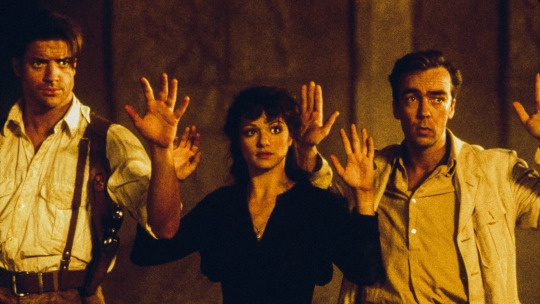
Brendan Fraser, Rachel Weisz and John Hannah in ‘The Mummy’ (1999).
When you delve into the Letterboxd reviews of The Mummy, it quickly becomes clear how widely beloved the film is, 3.3 average notwithstanding. Of more concern to the less youthful among us is how quaintly it is perceived, as if it harkens back to the dawn of cinema or something. “God, I miss good old-fashioned adventure movies,” bemoans Holly-Beth. “I have so many fond memories of watching this on TV with my family countless times growing up,” recalls Jess. “A childhood classic,” notes Simon.
As alarming as it is to see such wistful nostalgia for what was a cutting-edge, special-effects-laden contemporary popcorn hit, it has been twenty-one years since the film was released, so anyone currently in their early 30s would’ve encountered the film at just the right age for it to imprint deeply in their hearts. This has helped make it a Raiders of the Lost Ark for a specific Letterboxd demographic.

Sommers took plenty of inspiration from the Indiana Jones series for his take on The Mummy (the original 1932 film, also with a 3.3 average, is famously sedate), but for ten-year-olds in 1999, it may have been their only exposure to such pulpy derring-do. And when you consider that popcorn cinema would soon be taken over by interconnected on-screen universes populated by spandex-clad superheroes, the idea that The Mummy is an old-fashioned movie is easier to comprehend.
However, for all its throwbackiness, beholding The Mummy from the perspective of 2020 reveals it to have more to say about the future of cinema than the past. 1999 was a big year for movies, often considered one of the all-time best, but the legacy of The Mummy ties it most directly to two of that year’s other biggest hits: Star Wars: Episode One—The Phantom Menace and The Matrix. These three blockbusters represented a turning point for the biggest technological advancement to hit the cinematic art-form since the introduction of sound: computer-generated imagery, aka CGI. The technique had been widely used from 1989’s The Abyss onwards, and took significant leaps forward with movies such as Terminator 2: Judgment Day (1991), Jurassic Park (1993) and Starship Troopers (1997), but the three 1999 films mentioned above signified a move into the era when blockbusters began to be defined by their CGI.
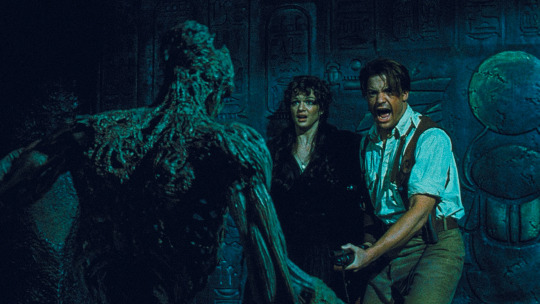
A year before The Mummy, Sommers had creatively utilised CGI in his criminally underrated sci-fi action thriller Deep Rising (another film that deserves a higher average Letterboxd rating, just sayin’), and he took this approach to the next level with The Mummy. While some of the CGI in The Mummy doesn’t hold up as well as the technopunk visuals presented in The Matrix, The Mummy showed how effective the technique could be in an historical setting—the expansiveness of ancient Egypt depicted in the movie is magnificent, and the iconic rendering of Imhotep’s face in the sand storm proved to be an enduringly creepy image. Not to mention those scuttling scarab beetles.
George Lucas wanted to test the boundaries of the technique with his insanely anticipated new Star Wars film after dipping his toe in the digital water with the special editions of the original trilogy. Beyond set expansions and environments, a bunch of big creatures and cool spaceships, his biggest gambit was Jar Jar Binks, a major character rendered entirely through CGI. And we all know how that turned out.
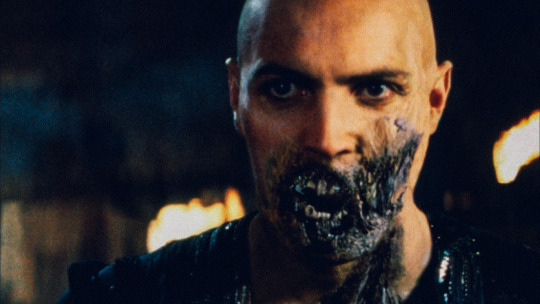
A CGI-enhanced Arnold Vosloo as Imhotep.
Sommers arguably presented a much more effective CGI character in the slowly regenerating resurrected Imhotep. Jar Jar’s design was “bigger” than the actor playing him on set, Ahmed Best. Which is to say, Jar Jar took up more space on screen than Best. But with the zombie-ish Imhotep, Sommers (ably assisted by Industrial Light & Magic, who also worked on the Star Wars films) used CGI to create negative space, an effect impossible to achieve with practical make-up—large parts of the character were missing. It was an indelible visual concept that has been recreated many times since, but Sommers pioneered its usage here, and it contributed greatly to the popcorn horror threat posed by the character.
Sommers, generally an unfairly overlooked master of fun popcorn spectacle (G.I. Joe: The Rise of Cobra is good, guys), deserves more credit for how he creatively utilized CGI to elevate the storytelling in The Mummy. But CGI isn’t the main reason the film works—it’s a spry, light-on-its-feet adventure that presents an iconic horror property in an entertaining and adventurous new light. And it happens to feature a ridiculously attractive cast all captured just as their pulchritudinous powers were peaking.
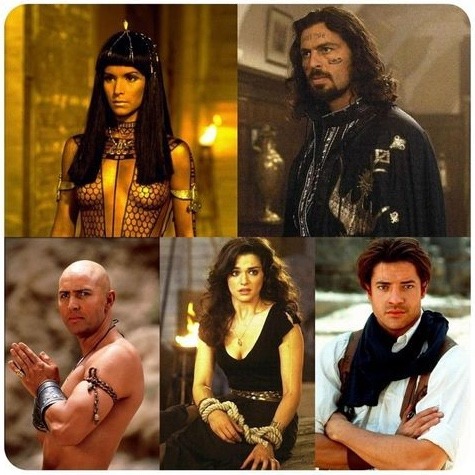
Meme-worthy: “My sexual orientation is the cast of ‘The Mummy’ (1999).”
A rising star at the time, Brendan Fraser was mostly known for comedic performances, and although he’d proven himself very capable with his shirt off in George of the Jungle (1997), he wasn’t necessarily at the top of anyone’s list for action-hero roles. But he is superlatively charming as dashing American adventurer Rick O’Connell. His fizzy chemistry with Weisz, playing the brilliant-but-clumsy Egyptologist Evie Carnahan, makes the film a legitimate romantic caper. The role proved to be a breakout for Weisz, then perhaps best known for playing opposite Keanu Reeves in the trouble-plagued action flop Chain Reaction, or for her supporting role in the Liv Tyler vehicle Stealing Beauty.
“90s Brendan Fraser is what Chris Pratt wishes he was,” argues Holly-Beth. “Please come back to us, Brendaddy. We need you.” begs Joshhh. “I’d like to thank Rachel Weisz for playing an integral role in my sexual awakening,” offers Sree.
Then there’s Oded Fehr as Ardeth Bey, a member of the Medjai, a sect dedicated to preventing Imhotep’s tomb from being discovered, and Patricia Velásquez as Anck-su-namun, Imhotep’s cursed lover. Both stupidly good-looking. Heck, Imhotep himself (South African Arnold Vosloo, coming across as Billy Zane’s more rugged brother), is one of the hottest horror villains in the history of cinema.
“Remember when studio movies were sexy?” laments Colin McLaughlin. We do Colin, we do.
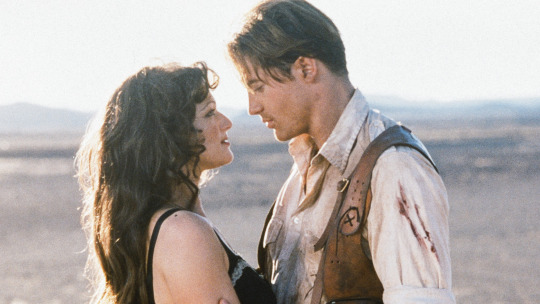
Sommers directed a somewhat bloated sequel, The Mummy Returns, in 2001, which featured the cinematic debut of one Dwayne Johnson. His character got a spin-off movie the following year (The Scorpion King), which generated a bunch of DTV sequels of its own, and is now the subject of a Johnson-produced reboot. Brendan Fraser came back for a third film in 2008, the Rob Cohen-directed The Mummy: Tomb of the Dragon Emperor. Weisz declined to participate, and was replaced by Maria Bello.
Despite all the follow-ups, and the enduring love for the first Sommers film, there has been a sadly significant dearth of movies along these lines in the two decades since it was released. The less said about 2017 reboot The Mummy (which was supposed to kick-off a new Universal Monster shared cinematic universe, and took a contemporary, action-heavy approach to the property), the better.

The Rock in ‘The Mummy Returns’ (2001).
For a long time, adventure films were Hollywood’s bread and butter, but they’re surprisingly thin on the ground these days. So it makes a certain amount of sense that nostalgia for the 1999 The Mummy continues to grow. You could argue that many of the superhero films that dominate multiplexes count as adventure movies, but nobody really sees them that way—they are their own genre.
There are, however, a couple of films on the horizon that could help bring back old-school cinematic adventure. One is the long-planned—and finally actually shot—adaptation of the Uncharted video-game franchise, starring Tom Holland. The games borrow a lot from the Indiana Jones films, and it’ll be interesting to see how much that manifests in the adaptation.
Then there’s Letterboxd favorite David Lowery’s forever-upcoming medieval adventure drama The Green Knight, starring Dev Patel and Alicia Vikander (who herself recently rebooted another video-game icon, Lara Croft). Plus they are still threatening to make another Indiana Jones movie, even if it no longer looks like Steven Spielberg will direct it.
While these are all exciting projects—and notwithstanding the current crisis in the multiplexes—it can’t help but feel like we may never again get a movie quite like The Mummy, with its unlikely combination of eye-popping CGI, old-fashioned adventure tropes and a once-in-a-lifetime ensemble of overflowing hotness. Long may love for it reign on Letterboxd—let’s see if we can’t get that average rating up, the old fashioned way. For Anwen.
Related content
How I Letterboxd with The Mummy fan Eve (“The first film I went out and bought memorabilia for… it was a Mummy action figure that included canopic jars”)
The Mummy (Universal) Collection
Every film featuring the Mummy (not mummies in general)
Follow Dom on Letterboxd
#the mummy#brendan fraser#stephen sommers#action adventure#fantasy adventure#action adventure film#the green knight#david lowery#dominic corry#letterboxd
530 notes
·
View notes
Text
The Trial of the Chicago 7 (Or, Sorkin’s attempt to show you how nothing has changed in 52 years)
If you know anything about Aaron Sorkin, the much-acclaimed writer/creator of television shows like The West Wing, The Newsroom, you know that subtlety is not his strong suit. So, I was rather hesitant going into his newest film, The Trial of the Chicago 7, the infamous trial of eight gentlemen accused of conspiracy to incite violence/rioting in Chicago during the notorious 1968 DNC riots. Without diving too deep into the history, August 1968 was not Chicago’s finest hour. When the protesters chanted as a warning to the police, “The Whole World Is Watching!”, they weren’t wrong. Years ahead of the 24-hour news cycle, people all across America (and across the world) were glued to the TV watching the Chicago police beat the ever-living snot out of young folks protesting the Democratic Party’s decision to support the ever-controversial war in Vietnam. The film’s subject matter is sure to draw parallels to and resonate strongly with both the protests and civil unrest that took place this past summer following the death of George Floyd and countless other Black folk at the hands of police. So despite it’s appropriate timeliness, I was hesitant to watch this movie because I really wasn’t interested in watching Aaron Sorkin (who not only wrote but directed this film) try to mansplain to me that the trial of the Chicago 7 was all about injustice! Without knowing anything else about the trial beforehand (and I really didn’t), I already knew it’s a famous case of injustice. I wanted to watch the movie to learn about the people, the humans involved, and the nuance of the situation.
The film gets off to a rough start in the nuance department. After an effective montage introducing us to six of the eight members of the Chicago 7 (we’ll get to why there’s that numerical discrepancy), we meet the character who will be the lead prosecutor of the case: a straight-laced, clean-cut lawyer played by Joseph Gordon-Levitt. In an attempt to plant the seed early on that the eponymous trial is a sham, the first real scene of the film sees Gordon-Levitt meeting with Nixon’s newly appointment Attorney General John Mitchell who is pissed off that the prior AG didn’t resign from the office until an hour before Mitchell was confirmed. As retaliation, and in line with history’s understanding of Nixon’s pathologic paranoia, Mitchell decides to re-open the case exploring whether there was any conspiracy to incite riots in Chicago 1968. As JGL explains, this was something which Johnson’s AG as well as prior FBI investigations already decided did was not a viable case. The conversation that ensues is a little too on-the-nose. JGL shares his concerns that he doesn’t believe that the Chicago 7 are actually guilty, but Mitchell tells JGL, “then imagine how impressed I’ll be when you get a conviction.”
Of course, this conversation is largely a Sorkin invention, as is the weird decision to try to humanize the prosecutor played by Gordon-Levitt. I say "weird" because the film doesn’t do anything with it. We don’t get a real sense beyond that initial scene that JGL feels guilt or remorse for being a cog in the Nixon machine. The beginning of the film sets him up to be a similar character to David Schwimmer’s fascinating turn as Robert Kardashian in The People vs. O.J. Simpson. But in the end, it’s clear that Sorkin uses him just as a way in the beginning of the film to provide the thesis statement for the film, as if he were writing this script as a college term paper. This bothers me so much because it makes a late-film surprise appearance by Michael Keaton as Johnson’s AG lose a good deal of its impact. It would have been so much better if we as the audience came to the same revelation about the political origin of the trial at the same time that the defense lawyers did.
Sorkin’s lack of subtlety reared its ugly head in a few key moments that caused me to audibly groan while watching this film. Towards the end of the film, one of the more dramatic defendants, the merry prankster hippie Abbie Hoffman (played very well by Sacha Baron Cohen), is on the stand and is asked a particularly difficult question by the prosecution. He pauses. The prosecution asks what’s taking so long. Hoffman responds in a serious tone that runs opposite of his usual character, “Sorry, I’ve never been on trial for my thoughts before.” The film then slowly fades to black. I half-expected to hear the famous Law & Order “chun-chunn” sound next. That’s how cheesy and self-righteous the scene was.
The film’s ending too, where the defendants read off a list of all the fallen soldiers from Vietnam prior to their sentencing, felt a little too Hollywood to be believable… and indeed it didn’t happen that way. Elsewhere in the film, one of the more “prim and proper” defendants, the young head of the Students for a Democratic Society Thomas Hayden played by Eddie Redmayne, reflexively stands in honor of the judge’s exit as is court custom, forgetting that he and the rest of the defendants agreed not to stand. That’s not the bad part. The bad part comes later when Redmayne’s character travels to someone’s home and the Black maid who answers the door says to him, “I heard you were the only one to stand for the judge,” and then the camera just sorta lingers on her disappointment. We get it! The judge is a bad dude! Let’s move on!
Seriously, let’s move on. For all my griping, this is a very good movie. Those instances where Sorkin’s moral heavy-handedness is plain to see are so glaring because for the most part, the movie does a fantastic job of addressing the film’s (sadly still) politically controversial themes (police brutality, the culpability of protesters in starting riots, systemic racism, etc.) with a good deal of nuance. This mostly happens when Sorkin just sticks to the facts of the case, like when dealing with the whole saga of Bobby Seale, the eighth and only Black man of the Chicago 7. The day before the trial begins, Seale's lawyer required emergent surgery. Seale’s motion to have the trial postponed till he receive proper counsel is denied, as is his request to represent himself. Therefore, on trial without counsel, he frequently interrupts the court arguing about the unconstitutional nature of his trial, until the judge, played to chilling perfection by Frank Langella, becomes fed up with the interruptions and orders that Seale be bound, gagged, and chained to his chair. It’s a crazy powerful and uncomfortable scene, among the most haunting images I’ve seen in cinema. Finally, Seale’s case is determined to be a mistrial, changing the number of defendants from eight to seven. Hence, the Chicago 7.
But, the most inspired sequence of the film comes late in the movie when the defense gets wind of the prosecution’s plan to play a recording from the night of the riots where the prim and proper Tom Hayden can be (arguably) heard urging hundreds of listeners to “let blood flow all over the city.” Tom still believes that he would do well on the witness stand, but his defense lawyer (Mark Rylance as William Kuntsler) insists on showing him why this would be a bad idea. The ensuing scene sees Rylance role play the part of the prosecution cross-examining Hayden while the film intercuts scenes of a flashback of the actual events. the “truth” of that night, significantly muddies the water for this case. It by no means proves that the Chicago 7 are guilty of a conspiracy, but it certainly highlights the more human aspect of their situation. How is one expected to keep their calm when their best friend is beaten? And to what degree are people to be held responsible for decisions made in the heat of the moment?
The movie also has also interesting commentary on who should be the “face” or progressive politics, even today: the well-to-do and respectable Hayden or the in-your-face hippie comedian Hoffman? It’s an interesting question that never seems fully explored or resolved. Sorkin seems to land in the camp that Hayden’s respectability merely maintains status quo whereas Hoffman’s flagrant anti-establishment views is required for real change. But I don’t know how much of that is me just loving Cohen’s performance as Hoffman and finding Redmayne’s Hayden to be (appropriately) insufferably pretentious. Sorkin certainly gives Cohen the better lines.
Overall, this is a movie held up by its two primary strengths: its cast and its film structure. Aside from general inconsistencies of the script’s tone and the notable weakness I mentioned previously about overplaying the political motivation for the trial in the film's first 5 minutes, the film is nearly perfectly structured. We are sort of dropped in medias res into the trial and only get the facts of those few days shown to us in carefully placed flashbacks that help to flesh out the drama of the trial. It helps maintain pacing in what could have been a drag of a legal drama.
But really, it’s the cast and their performances that sell this movie. Sacha Baron Cohen is the star in my mind, so perfectly cast as Abbie Hoffman, but Frank Langella as the septuagenarian, prejudiced judge of the case is equally powerful. Yahya Abdul-Manteen II as the Black Panther Bobby Seale lends an air of desperate seriousness to the film, Eddie Redmayne shines as that white liberal dude who takes himself way too seriously, and Mark Rylance is wonderful as the courageous lead defense attorney, particularly in scenes dealing with Bobby Seale. While the whole trial weighs on him heavily as the film progresses, his genuine concern for Seale is palpable.
I spent much of this review telling you the things that were odd about this film, and I stand by that. But as I said, those things stand out because this is such a slick production that the cracks become that much more obvious. It largely avoids Sorkin’s penchant for blunt lack of nuance and offers a story that helps to greatly contextualize the very world we live in. It’s interesting that a story that sees ten men (including their lawyers) fail to win a fight against The Man still feels like an inspiring underdog tale. It resonated well with this viewer, especially as the ending makes clear that justice is eventually served. Yet, I recognize this may be a dangerous tale to tell these days, and why I think the movie is so successful is that it gives plenty of sobering evidence to suggest that justice (both then and now) is by no means guaranteed.
***/ (Three and a half out of four stars)
58 notes
·
View notes
Text
Smokey brand Retrospective: Red Pill Me
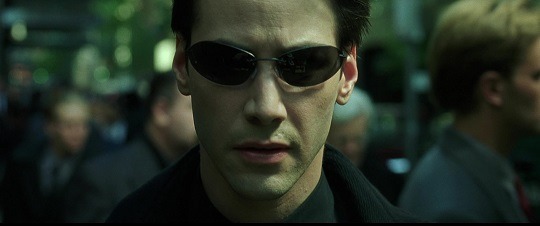
Cinemacon has passed and there has been a lot of awesome sh*t revealed. On the top of that list, obviously, Spider-Man: Far From Home has me geeked to high heaven but there were a ton of other noteworthy reveals. There was some Batman reveals, a few Mission Impossible 7 and Top Gun 2 trailers, plus audiences ever got a surprise screening of Ghostbusters: Afterlife. Now, that would be great on it's own but cats even got a little sizzle real for Matrix Resurrections: The long gestating fourth Matrix film. Apparently, this thing is releasing in December. I am lukewarm at best. I have fond memories of the Matrix trilogy as a whole but, since it’s final release some twenty years ago, the Wachowskis have been revealed to be one trick ponies. They kind of suck at film making. I mean, i liked Speed Racer but i just generally enjoy Speed Racer. It helped tremendously that Christina Ricci was Trixie, too, but everything after that was kind of balls. I also really like V for Vendetta but that’s not real their movie, they just adapted it. I guess you can say that about Speed Racer, too. Anyway, in light of there near Shyamalan-esque track record with their films, i wanted to revisit the first three Matrix films and see if they hold up, to try and muster some sense of excitement for what comes next.
The Matrix
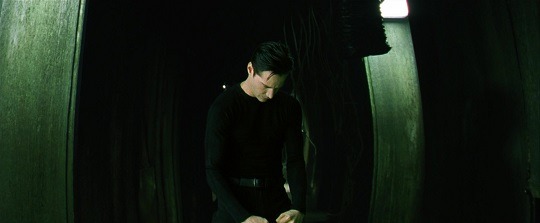
Of the trilogy, this is easily the best film. Everything about it is exceptional. The Matrix was a whole ass shift in the cultural zeitgeist. It was a lot of people’s first experience with accessible cyberpunk and I'll always love it for that. I’ll also love it for normalizing Hong Kong style action sequences and giving us the most breathtaking application of Bullet Time I've seen to date. The Matrix s why the theater exists. If you’ve never seen this thing on the big screen, you missed out on something very special. I had just just turned thirteen when it released and checked it out at the dollar theater. I had only ever seen anything like this, in anime. Seeing all of my favorite Eighties OVAs filtered through the big budget Hollywood lens was incredible. I even like the rather pedestrian narrative. I think the story worked for what the movie was trying to do. It’s a shame the Wachowskis have tried to rewrite history about the narrative as of late. I understand the underlying themes of identity and sexuality but come on? That’s some college film theory bullsh*t that got tacked on after the fact. Now, if the original script is to be believed, then, yes, all of that, but what we got is not so profound. This is a basic Chosen One narrative with Dope ass effects that were ahead of it’s time.
A fr as the cast, what can i say? These motherf*ckers were perfect. Keanu Reeves as Neo was inspired. It’s wild to say that because dude is a plank but it works. He’s the POV character, he’s who you see that world through. Making him a blank slate so to speak, helps with immersion and that is a world you definitely wan to be immersed within. This was my first experience with Carrie-Ann Moss and I've loved her ever since. Her Trinity fast became one of my favorite characters and I'm actually pretty excited to see where she is in the new film. Lawrence Fishburne as Morpheus was an interesting choice. I wasn’t mad and it worked perfectly but it was weird seeing him in such an active, action oriented, role. That said, for me, this movie is made by Hugo Weaving. He is absolutely monstrous as Agent Smith. He’s got this scene chewing energy that mirrors Christoph Waltz’s Hans Landa and we all know how much i love that Nazi f*ck so that’s really high praise. To this day, I've got his Humanity is a Virus speech memorized. It was just that f*cking good! The Matrix is an exquisite watch and it is absolutely mandatory viewing if you consider yourself a fan of cinema.
The Matrix Reloaded
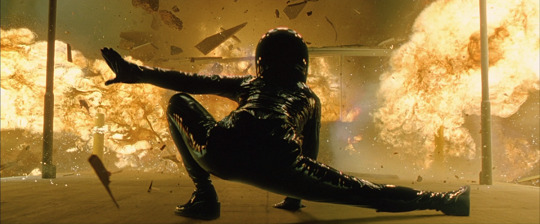
Whoo, boy, talk about a drop in quality. Reloaded released four years later in 2003 and it screams Studio Mandate. I was a sprightly eighteen years old when this thing dropped and made it a point to see it opening day. I really enjoyed the first outing so i figured this one would be just as amazing. Indeed, i remember leaving the theater thinking to myself how decent of a sequel it turned out to be. It wasn’t better than the first but it didn’t sh*t the bed like most follow-ups do. Fast forward to present day and, after watching this thing again for the first time in probably fifteen years, it’s kind of f*cking bad. Like, as a cinematic experience, it’s pretty tight Everything is amped up. Tons more action, way more bombastic set pieces, stakes have been raised considerably; The Matrix Reloaded is everything you want in a summer blockbuster sequel. However, that’s it. Everything else is worse. The acting has become way too hammy and the new cast members fit into this narrative like a square peg in a round hole. Why is f*cking Niobe even in this thing? Who even is the Merovingian? Why is Mouse? The pacing is all over the place, too. Like, this thing stops dead in it’s tracks on several occasions but that’s not the worst of it.
The worst thing is the narrative. What the f*ck even is the story trying to be told in this movie? It doesn’t make any f*cking sense. The Matrix was, very obviously, a standalone film. That was a closed narrative. Neo’s story had been told. Everything after that is unnecessary. This movie is an exercise in the unnecessary. I appreciate all of how unchained and manic Smith is in this but, outside of that, what the f*ck was the point of this whole narrative? It’s filler. This movie is filler and it feels like it. The returning cast is serviceable and seeing Zion was interesting. I like how all the survivors are just sweaty black people. I literally hated everyone added to the cast though. Well, that’s not quite true. I rather enjoyed Collin Chou as Seraph. Dude was inconsequential but i love seeing Asian martial artists not name Li or Chan getting some shine. Also, Monica Bellucci is in this and i kind of just love her in general. Her Persephone is absolutely disposable but she looks damn fine in that plastic wrapped dress of hers. I literally can’t be bothered mentioning anyone else. They are that forgettable. This movie is that forgettable. And it’s arguably the best of the two sequels.
The Matrix Revolutions

Talk about going out with a thud. Man, i saw this with my best friend, rest in peace B, and we both hated it. He was an even bigger fan of The Matrix than i was so his disappointment was palpable. I’ll never forget his visceral reaction when that rainbow spread across the super happy Hollywood ending. Dude was hot and he had every right to be. The first Matrix set up this intriguing, immersive, world full of fanatic visuals, great piratical stunts, and a very through provoking premise. The second Matrix was your basic Hollywood sequel; More shine, less substance. But Revolutions? Man this is peak Wachowski fail. You saw hints of this messiah sh*t in the first, it’s literally a Chosen One narrative, but thy went all in on that sh*t in Reloaded. By the time Revolutions finished, this whole narrative was so far up it’s own ass, it didn’t know which way was up. It just f*cking ends. Everyone is dead and it’s over. The Wachowskis went heavy on the Jesus imagery, they were not subtle, and the f*cking conflict just ends. Robot don’t stop using people as batteries. Flesh and blood Humans still have to live in Zion. The only thing that’s changed is Neo’s dead and Agent Smith has been deleted. That’s it. The Matrix still exists, people are still trapped in it, and everything that happened in these films doesn’t f*cking matter. Literally right back at the start of the whole goddamn conflict. Revolutions is so f*cking disappointing, dude, by every measure of that metric.
Hugh Weaving is still pretty good as Smith and Keanu does his best imitation of white bread as Neo but, like, everything else is just so pedestrian. Plus, this thing is long. Like, unreasonably so. Why the f*ck is this movie two hours? The entire trilogy is kind of like that but it’s most egregious in this one. This story could be told in ninety minutes, just like Reloaded. Why the f*ck do i have an extra half hour of bullsh*t in this? Like, that whole “Neo Lost” arc was unnecessary, in both sequels. F*cking why? I don’t hate Revolutions. It’s not a “bad” film per say, it’s just disappointing. It’s the poster child for the law of diminishing returns. The Matrix Revolutions is the what happens when you let creatives with fresh egos, run amok with one hundred and fifty million f*cking dollars. So much spectacle but even less substance that Reloaded and that motherf*cker was a hollow mess. Still, The Matrix Revolutions is better than anything Michael Bay or Zack Snyder has ever made so i guess it’s got that going for it.
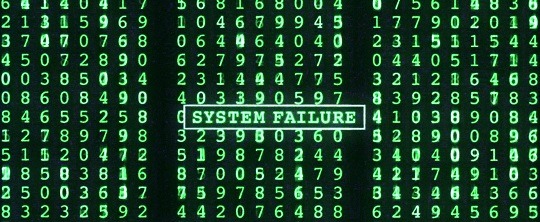
#The Matrix#The Matrix Reloaded#The Matrix Revolutions#The Matrix Trilogy#Smokey brand Retrospective#Keeanu Reeves#Carrie-Anne Moss#Hugo Weaving#Lawrence Fishburne
3 notes
·
View notes
Link
Towards the middle of Disney’s live-action remake of Mulan, the shape-shifting witch Xian Lang, played by Gong Li, finally encounters Liu Yifei’s Hua Mulan on the battlefield. Although Mulan is disguised as a man, Xian sees her true identity and tells her: “You will die pretending to be something that you are not.”
There is perhaps a lesson for Disney in these words.
Mulan is supposed to be just another Disney princess in a Chinese outfit – and the desire to be free and independent is seen in all iconic Disney characters, from Jasmine in Aladdin to Elsa in Frozen. But themes of freedom and independence are taboos for a film targeting the vast China market, so if a Chinese dress is to be given to a Disney princess, some tweaks are necessary.
Perhaps understanding this, Disney appears to have decided to infuse as much “Chineseness” into the film as possible to please China, the world’s second-largest film market, and its censors in order to get the film screened.
So what should be added? Mulan must be loyal to the country and be willing to sacrifice her life to protect the emperor; and must live to bring honour to both her family and her country. Such elements aimed at boosting China’s national pride should work like magic, right?
Disney might have thought it had a sure thing by selling as a Chinese story adapted from a Chinese legend with an ensemble Chinese cast. But Disney was – to paraphrase former Chinese president Jiang Zemin’s famous admonition to the Hong Kong press – “too simple, sometimes naive” to think that the big bucks would roll in just like that.
But Disney’s most spectacular failure was its inability to understand the burden of history that weighs on almost every Chinese person’s shoulders when it comes to a watching Chinese story told by the West.
Chinese film-goers are sensitive and not to be offended – they will watch the film with a magnifying glass, focusing on every single detail, from the costumes to action choreography to (more importantly) the historical accuracy and cultural representation. To them, Mulan is not just another Disney princess, but an icon that supposedly represents the best of Chinese values.
This is where Disney lost the Chinese audience it has so desperately tried to win over. An embarrassing score of 4.9 out of 10 recorded on movie review website Douban – the Chinese equivalent of Rotten Tomatoes – would be hard to swallow for the film’s award-winning New Zealand-born director, Niki Caro, and the four Western writers who penned the script.
“Solid proof that Americans cannot tell a Chinese story well,” one user wrote on Douban. Another one said: “Please Americans, do not touch our Chinese culture. You don’t understand a thing. All I can see is deep-rooted arrogance and prejudice.”
Critics quoted in the Global Times – an English-language newspaper under the Chinese Communist Party mouthpiece People’s Daily – went further, blasting historical inaccuracies and misunderstanding of Chinese culture throughout the film. The newspaper called it “a mixture of oriental elements and symbols in the eyes of Westerners” and said Western fairy tales were incompatible with traditional Chinese stories.
This is a disaster made worse by the fact that the Beijing mouthpiece once promised that Liu and Mulan had the full support of the 1.4 billion Chinese people during the heat of the #BoycottMulan movement.
In the four days since the film opened in China on Friday, Mulan has so far brought in just US$23.2 million at the Chinese box office. This puts it on the low end of Disney film debuts in China and below the US$30 million the Christopher Nolan spy thriller Tenet generated the previous weekend. The restrictive reopening of cinemas in China after the coronavirus outbreak likely affected the figures, but the film’s poor reception is unlikely to help Disney rake in the big bucks it dreamed of.
However, not all criticism of the film is built on wounded national ego. Many dedicated fans of the 1998 animated film simply did not like the live-action remake, criticising the change of plot and the removal of beloved characters such as the small dragon Mushu. Many are baffled by the introduction of Xian Lang, although she is arguably the film’s most interesting character as she challenges the world dominated by men.
Surely the film’s epic fighting scenes would find favour in the land of wuxia films? Unfortunately not – the Chinese audience has been spoiled by numerous home-grown, big-budget productions during the past decade. Mulan’s fighting scenes – particularly the wire work – are so bad that some internet users even apologised to Chinese director Zhang Yimou for previously criticising his action fantasy epic The Great Wall.
The new Mulan is a lacklustre feature saturated with bland characters who convey little emotion. Liu’s emotionless performance is unbearable, and the choppy editing and scriptwriting make the film painful to watch. But worst of all is the misunderstanding and misinterpretation of qi throughout the film. Please Hollywood, just stop.
Disney has bent over backwards in the hope of making a splash in China with its “Chinese story”, and the appalling outcome, one that has upset both the West and China, is probably Hollywood’s most arresting plot twist ever.
The studio that has brought so much joy to people across the world has forgotten what it does best. Like Mulan herself, Disney is pretending to be something that it’s not, as it succumbs to an insatiable hunger for Chinese yuan.
Will Hollywood learn any lesson from this fiasco? Probably not, as long as it continues to bow down and beg for cash from the middle kingdom.
20 notes
·
View notes
Text
Mortal Kombat (2021) vs. Mortal Kombat (1995): Which is Better?
https://ift.tt/3vh6gqd
This article contains Mortal Kombat (2021) spoilers.
“Test your might.” These are the words of a minigame in the original Mortal Kombat arcade fighter from 1992. They were meant to signal an interlude between the simple pleasures of digitized sprites spilling buckets of blood. Yet they’ve also become synonymous with a franchise that’s arguably the most popular video game fighter of all-time. The phrase is also a pretty apt description for the various filmmakers who’ve attempted the challenge of taming this crazy dragon on screen.
More than any other video game series, Mortal Kombat has seen a plethora of live-action adaptations, from Hollywood movies to syndicated television. This weekend marks another milestone in that history, too, with Warner Bros. and New Line Cinema’s hotly anticipated Mortal Kombat reboot opening in theaters and premiering on HBO Max. It’s the third Mortal Kombat movie released under the New Line banner, but let’s just call it the second serious attempt at putting this universe on screen after the 1995 cult classic directed by Paul W.S. Anderson.
That ’95 movie holds the dubious honor of being generally considered the best video game movie adaptation of all-time, thanks to a tongue-in-cheek tone perfect for its mid-‘90s moment and maybe the greatest use of techno music in film. Genuinely, how many other pictures have the soundtrack scream the title of the movie over and over again, and it seems like a good idea?
The new movie took a different approach to the material, and certainly a bloodier one. While both adaptations share the same basic premise of chosen “Earthrealm” guardians protecting our dimension from an invading force via martial arts fights, the executions diverge radically. Here’s how.
The Story
The starkly different approach to storytelling in director Simon McQuoid’s 2021 Mortal Kombat is evident during the film’s opening scene. Beginning in 1600s Japan with a gnarly, brutal fight sequence between Sub-Zero (Joe Taslim) and Scorpion (Hiroyuki Sanada), this version of Mortal Kombat relies heavily on lore and world-building. If you know the video game backstory of Sub-Zero/Bi-Han, and how he was kidnapped as a child by the Lin Kuei cult so they could brainwash him into the magical ninja we now see slaughtering Scorpion’s family, the scene has a sense of fateful tragedy.
If you don’t, well Taslim and Sanada are such gifted martial artists that it still looks really cool. By contrast, Mortal Kombat of the ’95 vintage is pretty straightforward and to the point. This is basically an interdimensional version of the Bruce Lee classic, Enter the Dragon (1973), only with magical powers and the fate of the world at stake.
We’re introduced to three fighters in ‘95, Liu Kang (Robin Shou), Johnny Cage (Linden Ashby), and Sonya Blade (Bridgette Wilson-Sampras), who all get on a boat to the tournament for different reasons. And while Liu Kang was raised by his Shaolin monk upbringing to know what this tournament is, the other two act as our eyes and ears into this strange world of mysticism and Outworld menace. By the time they reach the island, they understand they need to compete with superpowered foes to save Earth in a structured tournament.
Conversely, Mortal Kombat (2021) is curiously both more secretive and open about its bizarre universe. For a much larger chunk of its running time, the new movie’s point-of-view character Cole Young (Lewis Tan) is completely mystified by the superpowered horrors happening around him while the viewer is keyed in early by scenes set in the evil dimension of Outworld. There we see the dastardly sorcerer Shang Tsung (Chin Han) scheme from a throne about killing Cole in order to prevent a prophecy vaguely connected with the movie’s prologue scene in the 1600s. So he sends Sub-Zero to kill Cole in his day-to-day life as an MMA fighter, slaughtering him before he understands he’s been chosen to participate in the sacred Mortal Kombat tournament, which is held in secret every generation.
In fact, there is no actual tournament in the new film. Rather the plot eventually becomes Shang Tsung’s chosen band of evil warriors attempting to cheat ahead of the conflict by attacking Earthrealm’s depleted champions before they even discover they have superpowers (or “arcanas”) and know what Mortal Kombat is. The film thus becomes a quest movie with Cole joining forces with other “chosen ones” (or chosen one-aspirants) to find the Temple of Raiden, a lightning god (played by Tadanobu Asano) who represents the interests of Earthrealm in the tournaments. From there the heroes must learn their powers and evade preemptive, cheating attacks from Outworld’s thuggish baddies.
Side by side, the approaches appear to be the differences between a traditional (if derivative) martial arts flick and a modern studio blockbuster that is trying to cram as much fan service and world-building lore into a two-hour movie as possible in the hopes of making fanboys happy. I hesitate to say the 2021 film is fully following the Marvel Studios template given its copious amounts of blood and (seeming) lack of interest in building a shared universe of interconnected franchises. However, the 2021 film was certainly released in a post-Marvel world where the focus in studio committee rooms is less on telling a single story and more on building a whole convoluted mythology filled with fan favorite characters who are begging to be explored endlessly by future movies. It’s less story-driven than it is content-driven.
As a result, it leaves the narrative lacking. Viewers know long before Cole or 2021’s Sonya Blade (Jessica McNamee) what’s going on, and all the anticipation for a tournament that never materializes feels anti-climactic. With its simple structure, the Anderson-directed movie in the ‘90s plays out much more satisfyingly with three heroes (plus poor dead meat like “Art Lean”) entering a tournament by choice or trickery and then trying to survive it while learning vanilla, if tangible, life lessons. Liu Kang needs to accept his destiny; Johnny Cage must look before he leaps; and Sonya has to accept she’ll be the film’s damsel in distress even though she kicks ass. It’s an Enter the Dragon knockoff but it still has more kick than fan service.
Round One goes to 1995.
The Tone
The tone and aesthetics are also jarringly different between the two movies. Released in 1995, the same year Pierce Brosnan became James Bond, and two years before Arnold Schwarzenegger chilled out as Mr. Freeze, Mortal Kombat (1995) is an unmistakably campy movie and it leans into that fact.
Working with a low budget for a Hollywood spectacle even before New Line Cinema cut his funds by another $2 million right before cameras rolled, Anderson directed a B-movie that accepted its limitations and had fun with it. Apparently stars Ashby and Christopher Lambert, who played Lord Raiden in the ’95 movie, improvised dialogue throughout the shoot and rewrote entire scenes. As a consequence, Lambert’s lightning god was more of a jovial trickster in temperament, reminiscent of Loki instead of Odin. Johnny Cage, meanwhile, was essentially the film’s Han Solo: a cocksure wiseacre next to the stoic hero (Liu Kang) and a no-nonsense woman who doesn’t like to be called princess (Sonya).
As again signaled by the almost funereal opening sequence of Mortal Kombat (2021), where Sub-Zero murders Scorpion’s young family, the 2021 film is going for a differing sensibility. There is actually quite a bit of humor still present, with the real reason the Johnny Cage character got cut becoming apparent the moment we meet Kano (Josh Lawson), a loudmouth smartass who takes on the comic relief role but with an added slice of thuggery. Hence his dialogue has a lot more F-bombs than it does cracks about $500 sunglasses.
Other than moments where Kano is allowed to steal scenes, however, Mortal Kombat (2021) plays it pretty straight. Asano’s Raiden is imperious and his fighters stoic. However, it’s also worth noting Raiden is played by a Japanese actor, as opposed to a white American-born Frenchman who was raised in Switzerland (Lambert has quite the international background). Indeed, one of the more admirable qualities of the 2021 film is the focus on a diverse cast that includes more roles for Asian actors and people of color, whereas the 1995 film whitewashed Raiden and left out the Black American character Jax for little more than a cameo.
The 2021 film also upped the gore quotient considerably. While the martial arts of the 1995 film were decidedly PG-13, the tone of the movie was only a few steps removed from Power Rangers in some respects, including its introduction of a horrible CGI creation known as Reptile. The Reptile in the 2021 film appears more convincingly, like the latest monstrosity out of a Jurassic World lab, and the violence he commits is visually gruesome (more on that later).
Honestly, preferences over the aesthetic differences between the two films comes down to a matter of taste. I prefer the tongue-in-cheek eye rolls of the 1995 film given how nonsensical this universe is, and how at the end of the day its target audience remains children. Yet I imagine many adult fans of the video games will prefer the blood-soaked earnestness found in 2021.
Round Two is a draw.
Chosen Players
Anyone who’s picked up a fighting game will tell you it’s all about finding a character or two you like and then training up with them. In 1995, Anderson had the advantage of primarily adapting the original 1992 arcade game with its limited collection of playable characters. Ergo, his film’s lineup easily focused on the three aforementioned heroes of Liu Kang, Johnny Cage, and Sonya Blade, plus the ambiguous Princess Kitana (Talisa Soto), and Lord Raiden. Meanwhile he divided his villain screen time between the sorcerer Shang Tsung (Cary-Hiroyuki Tagawa) and Shang Tsung’s minions, who were essentially glorified Bond henchmen with individual gimmicks.
Fan favorites Sub-Zero and Scorpion are present in the ’95 movie—with much more colorful, game-accurate costumes—yet they’re relatively low-hanging fruit in the tournament’s brackets. Their rivalry is given lip-service but they are dispatched by heroes Liu Kang and Johnny Cage relatively easily. Meanwhile Trevor Goddard’s Kano is more a hapless comic relief baddie who Wilson-Sampras’ Sonya kills with a great laugh line. “Give me a break,” Kano pleads with his head pinned between her thighs. “Okay,” she shoots back before snapping his neck.
Still, the movie largely belongs to Tagawa who makes a meal out of the scenery as the big bad. The guttural pleasure he has in so naturally turning all the over-the-top commands in the video game into his dialogue—“Finish Him!;” “Fatality;” “Test Your Might”—is infectious.
The 2021 film relies on a much larger cast of characters and, unlike the 1995 movie, attempts to give them each a moment to shine in the way Kitana and the original Kano could only dream. This surprisingly begins with the introduction of a totally new character in Cole Young as our point-of-view protagonist. While fan favorite Liu Kang was the hero in ’95, the character is now a supporting player played by Ludi Lin in 2021. And he’s not alone. The new Liu Kang’s cousin, Kung Lao (Max Huang), also gets enough screen time to show off his character’s beloved razor-rimmed hat, which he dispatches one of the movie’s villains with.
There is also the new Sonya, who may have the most complete arc as she strives to be accepted as a champion for Earthrealm, and Jax (Mechad Brooks), who is Sonya’s partner with the chosen one birthmark and who gets a new nasty origin story for his metal arms. And then the new Kano spends as much time working with the good guys as he does becoming a villain in an entirely rushed and unconvincing third act plot twist.
Read more
Movies
Mortal Kombat Easter Eggs and Reference Guide
By Gavin Jasper
Games
Mortal Kombat: Biggest Changes the Movie Makes to the Games
By Matthew Byrd
There are even more villains, most of whom amount to glorified cameos, including Mileena (Sisi Stringer), Nitara (Mel Jarnson), and Kabal (Daniel Nelson). However, they’re all even more perfunctory than Sub-Zero and Scorpion were in 1995. At least the ‘90s ninjas each got a few minutes to show off before being dispatched. Even the ostensible main villain of 2021, the new Shang Tsung, is fairly underserved, left to state banal dialogue from a throne without a throne room, and he’s never allowed to dominate scenes the way Tagawa did so gleefully back in the day.
Unfortunately, this is because the 2021 film has so many characters that it lacks any sense of narrative focus or cohesion. Tan’s arc of wanting to learn his power/arcana to defend his family is as broad and serviceable a hook as Shou’s 1995 Liu Kang wanting to avenge the murder of his brother. But Tan’s Cole Young gets lost in the shuffle after the first act and until the movie’s ending. Character turns like Kano betraying the other heroes similarly feels hackneyed because there is too much noise on screen to really care about who’s making it. Even Kang Lao’s death falls flat. It’s admirable that it’s a good guy fans theoretically should care about (unlike 1995’s token Black character created by the filmmakers to die), but the 2021 movie fails to make the uninitiated be concerned.
Of course there are exceptions. Namely Sub-Zero and Scorpion. Even though Scorpion ill-advisedly disappears for nearly all of the movie’s running time after the film’s terrific opening 10 minutes, Sanada has such presence, and such strong chemistry with Taslim’s Sub-Zero, that their opening salvo leaves you waiting the rest of the movie for Scorpion’s revenge. Taslim is also able to give Sub-Zero some surprisingly tangible, if only hinted at, pathos even after he kills a kid in his first scene and is then forced to act behind a mask thereafter. He’s the real villain of the piece you want to see go down, and his death scene is incredibly satisfying as a result.
It’s probably enough for fans of the games to favor this kitchen sink approach. But overall, less is more.
Round Three goes to 1995.
Fight Scenes
If there is one realm where the 2021 movie truly excels in over the previous film, this is it. And yes, a big part of that is the gore quotient. Whereas the 1995 flick was produced with a PG-13 rating in mind (my elementary school thanks New Line for that), the 2021 movie was able to embrace the gross out charm that made the original game stand out at the arcade all those decades ago. Street Fighter might’ve been first, but only Mortal Kombat let you pull the other player’s spine out.
While that effect doesn’t quite happen in the 2021 movie, almost everything else does. Nitara goes face first into a Kung Lao’s buzzsaw hat, which cuts her cleanly in half; Sub-Zero freezing Jax’s arms and then shattering them in a stomach-churning effect; and instead of going off a cliff, Prince Goro is disemboweled by Cole Young—which almost makes up for the fact that Goro is reduced to a mindless mute this time.
It’s like a highlight reel of fatalities from the video game. But the reason why this film’s fight scenes really stand above the 1995 film isn’t the bloodletting; it’s the action leading up to it. With brutal fight choreography, the new Mortal Kombat shines whenever it lets actors who can actually do the stunts take the arena. That includes Lewis Tan, whose Cole Young mostly fights other MMA types or CG monsters. But it’s especially true for Joe Taslim of The Raid fame. As the villainous Sub-Zero, his moves are lightning quick, even if his powers leave opponents frozen stiff. So when he shares the screen with Tan or Sanada, the action reveals an auhentic flair.
In comparison, the 1995 film suffers a bit from the sin Johnny Cage is trying to dodge within the story: it relies on stunt doubles and tight editing to make the fights exciting. It’s a shame too since Shou is an excellent martial artist, and the one scene he got to choreograph—Liu Kang versus Reptile—has an edge. But much of the time, Shou’s constrained by the direction and editing. Ashby and Wilson-Sampras, conversely, are not actual martial artists, though credit must be given to Wilson-Sampras for doing all her own stunts when getting the role of Sonya at the last minute.
Still, the fights stand taller in 2021. It’s a bit of a shame though that the movie is so heavily edited that it too often hides this fact. Unlike the 1995 ensemble, most of the cast has the moves in 2021, but the editing still feels stuck in the past with its reliance on confounding quick cuts and coverage. During our current era of John Wick and Atomic Blonde this is both a bizarre and disappointing choice. Nevertheless, this is an easy call.
Round Four goes to 2021.
Ending
The final fight was relatively satisfying in 1995. Tagawa is a preening villain, and when the Immortals’ techno “Mortal Kombat” theme plays, it’s a pleasure to watch Liu Kang wipe that smug smile off Shang Tsung’s face. However, the ending keeps going with a Star Wars-esque sendoff to Liu Kang’s force ghost brother, and then the movie undermines its catharsis by immediately setting up a sequel.
In the picture’s final moments, our three heroes, plus Kitana, return to the real-life Thai temple that’s supposed to be Liu Kang’s home. Lord Raiden waits for them there, getting some final sideways cracks in before Outworld’s evil emperor Shao Khan appears like a giant specter in the clouds. He immediately threatens an Earthrealm invasion, despite losing the tournament.
I can attest that in 1995, this was a stunning cliffhanger for eight-year-olds everywhere. But then… Mortal Kombat: Annihilation (1997), one of the worst films of the late ‘90s, happened.
Meanwhile in the 2021 film, we have a much more satisfying death for its villain when Scorpion returns from hell to send Sub-Zero to the hot place. Their fight is much more technically satisfying, and the cliffhanger setup is a lot more subtle. After defeating Shang Tsung’s warriors, if not Shang Tsung himself, the heroes of Earthrealm saved us all without an actual tournament ever occurring. And instead of Outworld cheating in this moment by invading anyway, they retreat. It’s an odd choice since they’ve been cheating the whole film, so why start playing by the rules now?
Even so, it leaves a destination for a second movie to actually head toward. And to tease that fact further, it’s implied Cole Young will now travel to Hollywood to recruit movie star Johnny Cage for a sequel. It’s pure fan service, but the kind that leaves the possibility open for better things to come. Considering we know where the 1995 movie’s cliffhanger leads—to pits of cinematic hell worse than any faced by Scorpion in the last 400 years—this is a victory for 2021 by default.
Round Five goes to 2021.
Final Victor
Ultimately, neither of these films are high art nor do they aspire to be. In some ways, it’s a case of picking your poison between schlock or schlock. Each has advantages over the other, as laid out above, and each is a long way from a flawless victory. Nonetheless, due simply to narrative and tonal cohesiveness, and just more memorable lead characters, I’ll go with the one that actually gets to the tournament this whole damn thing’s designed around.
Game over.
cnx.cmd.push(function() { cnx({ playerId: "106e33c0-3911-473c-b599-b1426db57530", }).render("0270c398a82f44f49c23c16122516796"); });
The post Mortal Kombat (2021) vs. Mortal Kombat (1995): Which is Better? appeared first on Den of Geek.
from Den of Geek https://ift.tt/2QUY7IW
2 notes
·
View notes
Text
November 2019 Empire Magazine The Rise of Skywalker Article Transcription
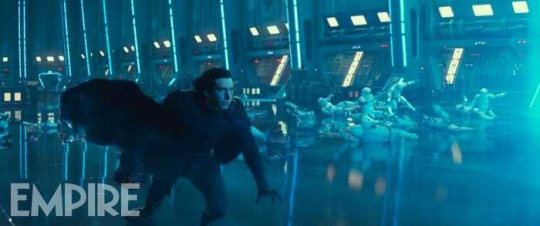
IT ALL STARTED with a Jane Campion retrospective. The Lincoln Center in New York was entering night two of an in-depth celebration of the Kiwi filmmaker’s work when, during a sold-out screening of The Piano, one member of the audience received a text message. He then received another. And another. Hunched down in his seat towards the middle of the auditorium, screenwriter Chris Terrio glanced furtively at his mobile as yet another text pinged to life on his screen. It was from J.J. Abrams. Just like the last. And the dozen or so before that.
It was 10 September 2017, and several hours earlier Terrio had received the first in what would become a torrent of communication. “I’ve just signed on to Episode IX,” it read. “We’re gonna write a new script. Would you consider writing it with me?”
“He didn’t even say the words ‘Star’ and ‘Wars’,” recalls Terrio, with a laugh. “He didn’t have to. I’d been about to go off and direct a small movie, but when you hear Star Wars, everything else goes away.”
Terrio agreed on the spot, planning to join Abrams in California as soon as his schedule would allow. But the texts kept coming. Throughout the afternoon, thoughts, ideas and questions popped up one after the other; Abrams’ frantic thumbs tapping out the first seeds of story and flinging them across the country to his newfound partner. And so, with Michael Nyman’s haunting score swelling around him and a still-buzzing handset in his grasp, Terrio stood up, shuffled apologetically along a row of seats, and walked out of the cinema, leaving Campion’s Oscar darling behind.
[Above image caption: “Director J.J. Abrams, cast and crew confront Klaud, the Resistance’s newest addition, at Pinewood studios”]
“J.J. is constantly brimming with ideas and, in the very best way, he’s very impatient about them! So we just started getting into it then and there. I got on a plane to LA the next day.”
Less than a week earlier, however, Episode IX’s future hadn’t looked nearly as certain. In development for the past two years under the auspices of Jurassic World director Colin Trevorrow, the film had abruptly flown off the rails on 5 September, when it was announced that Trevorrow was off the project. Rumours of script disagreements circled, but regardless of the reason, Lucasfilm had a serious problem: arguably the most important film in Star Wars’ history suddenly had no director, no story and a release date drawing nearer by the day. So Lucasfilm President Kathleen Kennedy sent up a flare to the one man she knew without any doubt could safely take Star Wars over the finish line.
“Getting involved in IX came as a bit of a shock,” recalls J.J. Abrams. “I had completed VII, Rian [Johnson] was doing VIII, and I was not meant to do IX at all. But the opportunity to not just finish the trilogy, but to finish the story that George began -- this trilogy of trilogies -- was too compelling and too tempting to reject.”
After delivering The Force Awakens, then the third-biggest movie in history, Abrams had taken a bow and walked away, returning to Bad Robot and a pair of TV pilots he’d been meaning to write. It was here, in his self-imposed exile, that Kennedy sought him out. Sure, it was an office just over a mile from Santa Monica pier rather than the grassy bluffs of Ahch-To, and Kennedy hadn’t so much climbed 500 hand-carved steps as punched ten digits into her phone but, like a vision of Episode VII’s final moments, there she was. Unexpected. Holding out something Abrams had thought lost and daring him to take it back.
“It’s exponentially the most daunting thing I’ve ever been involved with,” Abrams admits, eyebrows raised as if he still can’t quite believe the magnitude of the task. “But it was more exciting than it was anything.”
The director sits across from us in his suite at Beverly Hills’ Montage hotel, not far from where we last met, six years previously, when he’d just started work on a treatment for what would eventually become The Force Awakens. Abrams’ return as Star Wars’ Supreme Commander was announced just one day after Trevorrow’s departure, allaying the fears of both fans and shareholders alike: voices just a day before crying out in terror, now suddenly silenced. But with only two years to end a saga that had been four decades in the telling it was clear from the outset he was going to need some help. And so he composed a text (then several more) and sent them flying towards a movie theatre 3,000 miles away, where the Oscar-winning screenwriter of Argo was attempting to watch a film.
“I’ve admired Chris Terrio’s writing for a long time. I called on him because I knew it would be a challenge. But I didn’t know it would be quite as challenging as it was.”
[Above image caption: “Top: Martial art experts put Daisy Ridley through her paces. Above: Abrams with Oscar Isaac in Jordan”]
In a time when vast, interconnected stories have become commonplace, and breadcrumbs to the payoffs in Avengers: Endgame can be traced back ten or even 20 films, it’s hard to believe that the Star Wars sequel trilogy didn’t have its course firmly locked in before Episode VII ever left the spaceport. But, just as Abrams himself left neither chart nor compass for Rian Johnson to navigate with, so he began work on The Rise of Skywalker with nothing to guide him but his wits. It is, by Abrams’ own admission, his preferred method of working. An instinctive storyteller by nature, his impulse is to do what feels right in the moment, rather than slavishly adhere to some pre-ordained master plan. Very appropriately for a franchise so rooted in this exact philosophy, Abrams’ inclination has always been, as Alec Guinness once safely advised, to stretch out with his feelings.
“You can’t plan everything in advance -- which my ‘Revenge Of The Jedi’ poster proves,” he says. “You have a better idea and then you implement it. When I was working on VII, I’d be lying if I said I knew everything that was gonna happen in VIII and IX. I had some ideas, but we had a release date the required us to work on VII!”
So Abrams and Terrio started from scratch. They spitballed ideas during the day, swapped rapid-fire texts at night and, piece-by-piece, set about exploring the fundamental questions this movie had to address. Not least of all the aftermath of The Last Jedi, in which Rian Johnson, continuing Abrams’ story, had made some rather significant changes.
[Death Star section break]
[Above image caption: “Really big space dog just out of shot”]
THERE’S A WELL-WORN dramatic principle most commonly ascribed to Anton Chekhov that insists if you see a gun in the first act of a play, it must go off by act three or you’re simply wasting the audience’s time. The same, it appears, is true of dark side degenerates as, despite being sidelined in The Last Jedi, Chekhov’s Knights Of Ren will finally go off in The Rise Of Skywalker.
The Knights -- from which Kylo draws the latter part of his name -- are a nightmarish squad of enforcers who do the bidding of the former Ben Solo. A rag-tag band of thugs and killers decked in black just like their leader, though far more battleworn. Armoured in disparate styles -- one sports a cowl, one an angry welders mask, another a checkered draughtboard faceplate -- they pack a similarly eclectic arsenal, from multi-barrelled assault cannon to oversized, anime-style sword, poleaxe and a wicked-looking mace.
Referenced so portentously in The Force Awakens and glimpsed so very briefly during Rey’s vision on Takodana, the Knights and their role in Kylo’s fall from grace were set up as a major piece of the Star Wars puzzle. That is until Johnson, who clearly didn’t share Abrams’ interest, dropped the idea, sweeping them briskly under the rug next to the mystery of Rey’s parentage and the bisected corpse of Supreme Leader Snoke. “Let the past die,” instructed Kylo Ren in The Last Jedi. “Kill it, if you have to.” A sentiment, one could argue, that cut to the very heart of Johnson’s film.
“We thought about that line a lot,” says Terrio. “Rian did something that any good second act will do, which is create the antithesis. In The Force Awakens Luke Skywalker is a myth Rey’s obsessed with and there’s a warm embrace of the past. What Rian suggested is the past is a mixed bag and you can’t rely upon it to tell you where to go in the future. What we’re doing with Episode IX is trying to create a synthesis between those two points of view.”
And so, just as the investigation into Rey’s lineage looks set to be reopened, so too are the Knights back with a vengeance (not to mention Abrams talisman Greg Grunberg as pilot Snap Wexley). With Johnson’s tenure over, we’re playing in Abrams’ yard once more, although our suggestion that he might somehow be trying to course-correct is given short shrift.
“I never found myself trying to repair anything,” Abrams interjects. “If I had done VIII, I would have done things differently, just as Rian would have done things differently if he had done VII. But having worked on television series, I was accustomed to creating stories and characters that then were run by other people. If you’re willing to walk away from the thing that you created an you believe it’s in trustworthy hands, you have to accept that some of the decisions being made are not gonna be the same that you would make. And if you come back into it, you have to honour what’s been done.”
And what has been done is significant. Luke Skywalker is dead, passing on his knowledge and the mantle of last Jedi to Rey; The Resistance has been all but wiped out; Snoke is gone; and Kylo Ren -- now Supreme Leader Ren -- is more broken than ever, riven by conflict through the unlikely bond he forged with Rey. Bold and decisive, Johnson’s directions changed the board entirely, his sharp turns and gear shifts delighting some while earning the ire of others.
“Any time you are telling a story that people deeply care about, there is bound to be discussion and debate,” says Kathleen Kennedy. “That is something that has always been fundamental to the fabric of Star Wars.”
For Abrams and Terrio, meanwhile, the new landscape also brought with it new possibilities.
“Some of the most interesting scenes in The Last Jedi are the conversations between Rey and Ren,” says Terrio. “We’ve tried to pick up that complicated relationship that really has been present ever since the interrogation in Episode VII. When Ren takes off his mask, there’s a nakedness about him with Rey that he doesn’t express to anyone else. Rian developed that in fascinating ways and we’ve been able to develop it even further.”
Ren, left pointedly bare-faced by Johnson throughout VIII, now hides his face once more. It’s a development that, while not a rebuke to The Last Jedi, demonstrates the different touchstones that resonate with each director. Although, Abrams expands, reuniting Kylo with his mask is about more than just sinister aesthetics.
“Having him be masked, but also fractured, is a very intentional thing. Like that classic Japanese process of taking ceramics and repairing them, and how the breaks in a way define the beauty of the piece as much as the original itself. As fractured as Ren is, the mask becomes a visual representation of that. There’s something about this that tells his history. His mask doesn’t ultimately hide him, and his behaviour is revealed.”
Ren’s temptation by the light, like Rey’s temptation by the dark, forms the spine of a moral ambiguity that Johnson build on in VIII and very much carries over to IX, bringing with is a sense that George Lucas’ more clearly defined duality might be a relic of a simpler time. Neither light nor dark, The Rise of Skywalker and its characters exist more within what could be considered the grey side of the Force -- something underscored by the tantalising footage of ‘Darth Rey’ (complete with cowl, hangover pallor and double-bladed red lightsaber) that closed Abrams’ D23 Expo footage presentation in Anaheim in August.
“I’d rather let that one lie,” he deflects, when pressed on the subject. “But I will say that the movie has a number of things that you wouldn’t expect to have happen and you wouldn’t expect certain characters to do. There are surprises along the way.” He smiles, mischievously. “And that’s one of them.”
[Death Star section break]
[Image captions: “Top to bottom: Rey (Ridley), Finn (John Boyega), Chewbacca (Joonas Suotamo), and BB-8 listen intently to C-3PO (Anthony Daniels); Billy Dee Williams returns as Lando Calrissian; Joonas Suotamo, in Chewbacca’s threads, plays with his son on set.”]
THE VALLEY OF The Moon in Southern Jordan has seen its share of action. Cut into the red sandstone cliffs near Aqaba, the striking lowlands known in Arabic as Wadi Rum have been visited by both real and fictional Lawrences of Arabia, stood in for the face of Mars, been the birth place of the Alien in Prometheus, and will next year double as the eponymous desert planet in Denis Villeneuve’s Dune. It’s no stranger to stormtroopers, either, having played host to the ill-fated Jedha outpost in Gareth Edwards’ Rogue One. Today, though, Wadi Rum is a different part of the galaxy entirely, standing in for Pasaana: a new locale in the canon, and home to the bedouin-like Aki-Aki: a nomadic race of walrus-lie aliens with twin tentacles dangling from their maws in place of tusks.
Pasaana, along with the nippier climes of snow planet Kijimi, is one of several new worlds visited by The Rise of Skywalker. But most importantly, it’s a place where the heroes we’ve become acquainted with over the past two films will come together at last.
“The heart of Star Wars for me is the group of unlikely bedfellows on a breakneck adventure,” says Abrams. “And in Rise Of Skywalker it’s the biggest and most dastardly threat the galaxy has seen. The opportunity here was to have this group that has now become a surrogate family have to deal with this massive horror: the war to end all wars. Not just on the outside, but one the inside, which is to say it’s meant to be as much of a challenge personally as it is physically.”
Abrams’ war of wars has been well equipped: The First Order is stacked with new brass in the form of Richard E. Grant’s Allegiant General Pryde, neo-fascist ranks swollen by triangular-winged TIE Daggers and blood-red garrisons of newly commissioned Sith troopers, their angular crimson armour giving a fresh twist on the faceless squaddies -- much to Hasbro’s delight. The Resistance, too, will see its share of reinforcements, including Billy Dee Williams’ Lando Calrissian -- reprising the role after 36 years. Even General Leia Organa will return: the late Carrie Fisher making an appearance thanks to the discovery of unused footage that somehow fit the narrative perfectly.
The action itself has been teased in the barest glimpses: Rey and Kylo duelling on the wreckage of a Death Star; Rebel X-Wings and blockade runners fleeing destruction; a sky bristling with Imperial Star Destroyers, their numbers great enough to block out the star.
The presence of Old Empire firepower, easily overlooked, points to The Rise Of Skywalker’s biggest curveball to date. Back in April, when Abrams showed the first trailer at Star Wars Celebration in Chicago, the reveal of the film’s title was almost eclipsed by the familiar cackle of the original Emperor echoing over those final frames. When Ian McDiarmid himself walked out to demand, in full Palpatine rasp, that the projector “roll it again”, all present lost their shit in unison. How could this be? Is he a clone? A Force projection? Did he survive that fateful plummet down the Death Star shaft” Could Palpatine have been telling Anakin the truth when he spoke of Darth Plagueis The Wise’s cure for death? Irrespective of the fine print, Star Wars’ biggest of bads is officially back in business.
“Some people feel like we shouldn’t revisit the idea of Palpatine, and I completely understand that,” Abrams concedes. “But if you’re looking at these nine films as one story, I don’t know many books where the last few chapters have nothing to do with those that have come before. If you look at the first eight films, all the set-ups of what we’re doing in IX are there in plain view.”
The sheet scale of the task he’s undertaken cannot be overstated. Star Wars has been, by far, the most enduring and influential story of the modern era. Having to put the capstone on a saga that has shaped both childhoods and adult lives for several generations is something neither Abrams, nor producer Kathleen Kennedy, looking ahead to what the future holds for Star Wars, take at all lightly.
[Above image description: “Is it time for now Supreme Leader Ren (Adam Driver) to fulfill his destiny?”]
“We don’t have a crystal ball,” says Kennedy. “We tried to look at Solo and see if we could do two movies a year, and we found, ‘Hmm, that’s not going to work.’ So we backed off of that a little. But that doesn’t mean we don’t think about lots of different stories. That's the exciting thing about this universe.
“It’s been an honor to inherit and continue this iconic saga that has touched audiences for so many years, and we feel the weight of that every time we set out to tell these stories.”
The wider universe will, of course, live on. Whether through The Mandalorian on TV, or all-new movie sagas currently in development by Johnson and Game of Thrones’ David Benioff and D.B. Weiss. But for the core story, what for so many people is Star Wars, the final destination is now in sight.
“I’ve always loved the start of something,” says Abrams, “because of what it promises. Endings are hard. A great ending not only needs to honour everything that’s come before but, whether it’s a novel, a series or a film, you want to have it feel like it could end no other way.”
And so it comes back to feeling. In a world of meticulously planned franchises and strategic, multi-phased rollouts, Star Wars, as its core, has always trusted in The Force. Abrams had not expected to be here, had not expected to finish this tale. But now, as he places the final pieces of the puzzle, he feels like it was always meant to be. There’s a symmetry to him being the one to deliver The Rise Of Skywalker, just as there is in the fact that, faced with this near insurmountable challenge, his impulse was not to assemble story groups or worry about the top-down view, but to switch off his targeting computer, let go his conscious self and act on instinct.
“This story is alive, and you have to listen to it,” he says. “When you land on something that gives you the chills, that’s the only way you know if it feels right. You can deconstruct it all you want and try and make sense of how you found it, but somehow it finds you.”
He pauses, reflecting for a moment. “I don’t know how to explain it. Just the way I can’t quite explain how we had this footage of Carrie that we’re using. You can say, ‘Oh well, it’s just luck, it just happened to be,’ but it feels like something else. And I neither can nor want to explain any of it.”
Just as every saga has a beginning, so too will this one find its end. Abrams and Terrio have taken Lucas’ vision to its conclusion, and the story that began on 25 May 1977 will end on 19 December 2019.
“It’s been a pretty crazy ride,” reflect Terrio. “When I was a kid watching Return Of The Jedi on loop, I felt like I was the only person Yoda was speaking to. And then there I was all these years later, sitting in a tent in Jordan doing this film. You have this highly personal relationship to Star Wars, and then, suddenly, you find yourself right in the middle of it. That feeling is sort of indescribable.”
It’s one that, at the very least, is almost certainly worth having a movie interrupted for.
STAR WARS: THE RISE OF SKYWALKER IS IN CINEMAS FROM 19 DECEMBER
((Thank you to users @arlath_ma and @chinchingin on twitter for their photos of the article))
Article images can be found here: https://twitter.com/arlath_ma/status/1178648719325093888?s=19
#star wars#the rise of skywalker#episode ix#star wars spoilers#kylo ren#jj abrams#chris terrio#kathleen kennedy
372 notes
·
View notes
Text

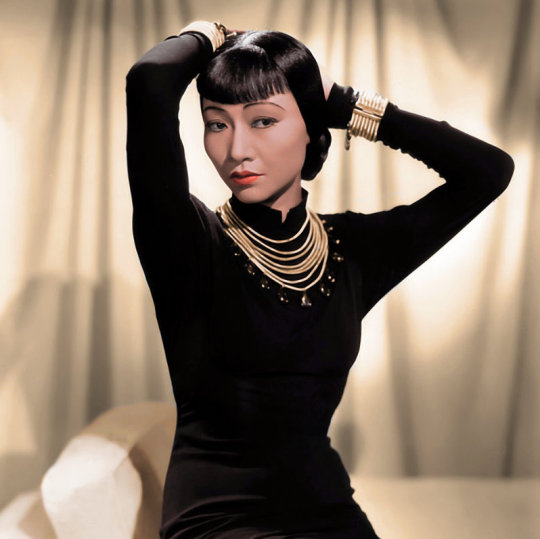
Propaganda
Maude Fealy (King Rene’s Daughter, David Copperfield)—She served cunt all the time
Anna May Wong (The Thief of Bagdad, Shanghai Express)—Wong was the first Chinese American movie star, arguably the first Asian woman to make it big in American films. Though the racism of the time often forced her into stereotypical roles, awarded Asian leading roles to white actors in yellowface, and prohibited on-screen romance between actors of different races, she delivered powerful and memorable performances. When Hollywood bigotry got to be too much, she made movies in Europe. Wong was intellectually curious, a fashion icon, and a strong advocate for authentic Asian representation in cinema. And, notably for the purposes of this tournament, absolutely gorgeous.
This is round 3 of the tournament. All other polls in this bracket can be found here. Please reblog with further support of your beloved hot sexy vintage woman.
[additional propaganda submitted under the cut.]
Maude Fealy propaganda:
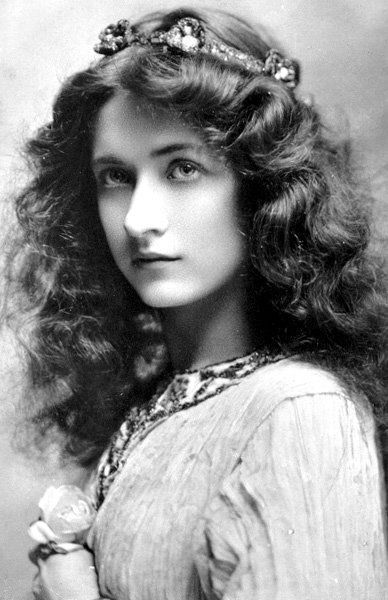

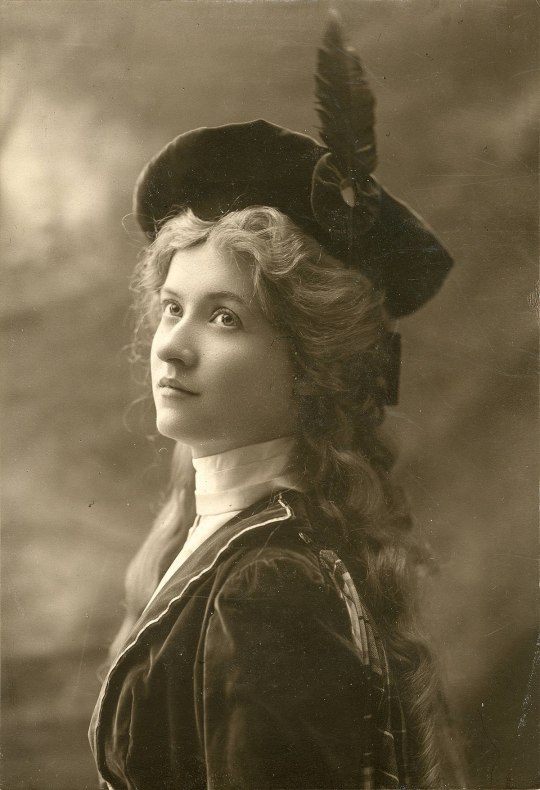
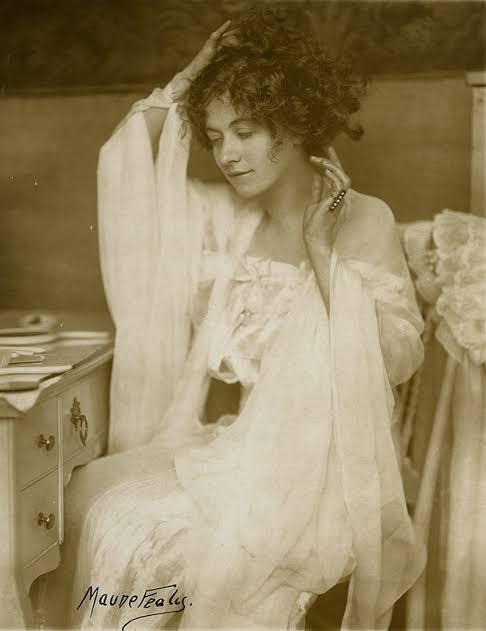
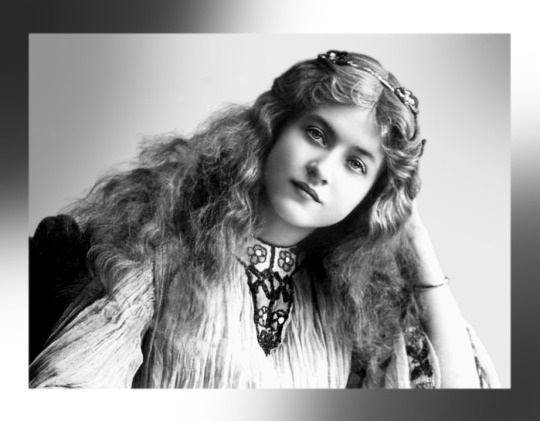
Anna May Wong propaganda:

"She so so gorgeous!! Due to Hollywood racism she was pretty limited in the roles she got to play but even despite that she’s so captivating and deserves to be known as a leading lady in her own right!! When she’s on screen in Shanghai Express I can’t look away, which is saying something because Marlene Dietrich is also in that film."

"SHE IS ON THE BACK OF QUARTERS also she was very smart and able to speak multiple languages and is a fashion icon on top of the acting/singing"

"Paved the way for Asian American actresses AND TOTAL HOTTIE!!! She broke boundaries and made it her mission to smash stereotypes of Asian women in western film (at the time, they were either protrayed them as delicate and demure or scheming and evil). In 1951, she made history with her television show The Gallery of Madame Liu-Tsong, the first-ever U.S. television show starring an Asian-American series lead (paraphrased from Wikipedia). Also, never married and rumor has it that she had an affair with Marlene Dietrich. We love a Controversial Queen!"

"She's got that Silent Era smoulder™ that I think transcends the very stereotypical roles in which she was typically cast. Also looks very hot smouldering opposite Marlene Dietrich in "Shanghai Express"; there's kiss energy there."
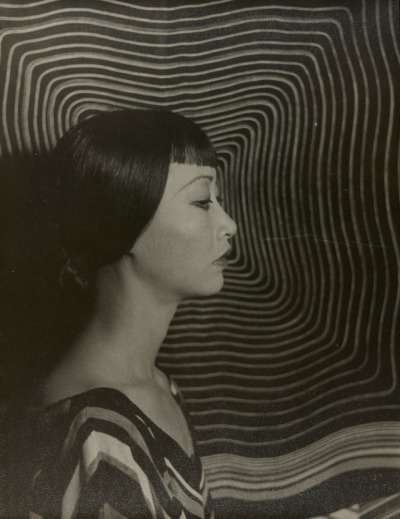
"Hot as hell and chronically overlooked in her time, she's truly phenomenal and absolutely stunning"
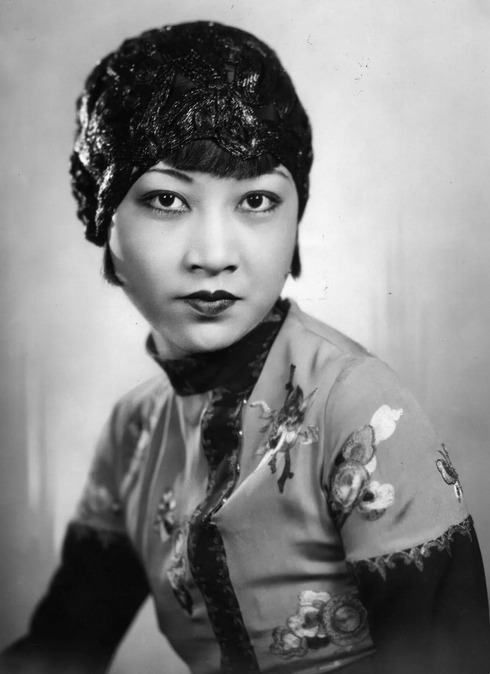

"A story of stardom unavoidably marred by Hollywood racism; Wong's early-career hype was significantly derailed by the higher-up's reluctance to have an Asian lead, and things only got worse when the Hayes code came down and she suddenly *couldn't* be shown kissing a white man--even if that white man was in yellowface. After being shoved into the Dragon Lady role one too many times, she took her career to other continents for many years. Still, she came back to America eventually, being more selective in her roles, speaking out against Asian stereotypes, and in the midst of all of this finding the time to be awarded both the title of "World's Best Dressed Woman" by Mayfair Mannequin Society of New York and an honorary doctorate by Peking University."
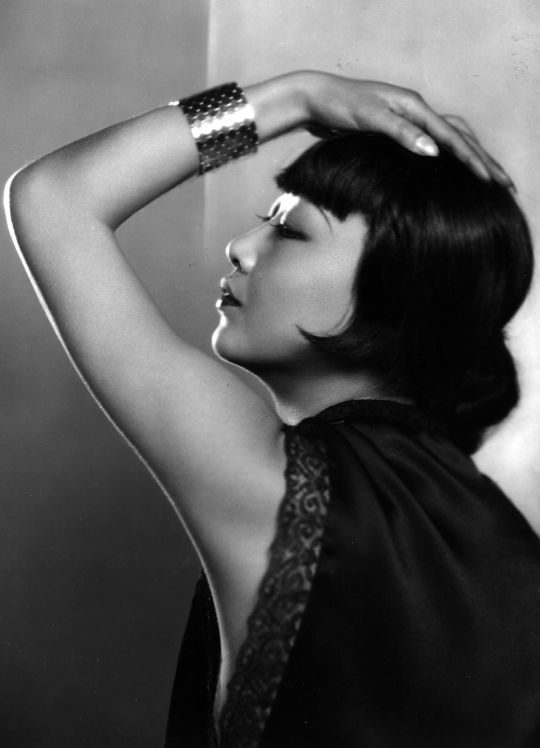
"Incredible beauty, incredible actress, incredible story."
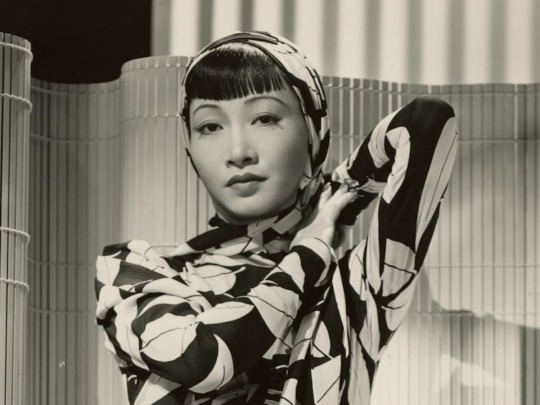
"-flapper fashion ICON. look up her fits please <3 -rumors of lesbianism due to her Close Friendships with marlene dietrich & cecil cunningham, among others -leveraged her star power to criticize the racist depictions of Chinese and Asian characters in Hollywood, as well as raise money and popular support for China & Chinese refugees in the 1930s and 40s. -face card REFUSED to decline"

140 notes
·
View notes
Text
Review: Da 5 Bloods (Lee, 2020)
"You will not kill Paul."
Spike Lee's latest is a sprawling, mammoth achievement that should serve as a loud reminder that he is still one of the most vital voices in American cinema. Da 5 Bloods is a lot of things at once: a metatextual response piece to fifty years of Vietnam War films from white filmmakers; a Shakespearean meditation on the international and generational traumas of war; a look into Lee's interpretation of the modern Black experience and how it works in dialogue with history. It's a visceral and harrowing experience, one that sucked me in to the point of not fully recognizing its faults in the moment, but even upon reflection, the highs the film hits are more than worth the time spent watching it.
I guess the best place to start is Delroy Lindo. Lindo, who has had the opportunity to shine in a handful of Lee's other joints over the years, is given the meatiest role of his career here as Paul, a Trump-supporting, PTSD-stricken veteran. He somehow emerges from the film as a genuinely sympathetic, if self-destructive, figure, whose violent and impulsive actions can be seen as an extension of a sick, broken individual. Much like the film, Lindo's performance starts out muted and naturalistic, and eventually swells into something like Shakespeare: his direct address soliloquies are arguably the film's most thrilling moments, and Lindo's unbroken gaze paired with his masterful and musical handling of the text makes it one of the finest pieces of screen acting in years.
Lindo isn't alone in delivering a great performance. While the title tells us there are four other Bloods, it's Jonathan Majors as Paul's son David who makes the strongest impression of the supporting cast. Majors, who also gave one of last year's strongest supporting performances in The Last Black Man in San Francisco, is astonishing here, quietly juggling the movie's warring tones and effortlessly lending Lindo's Paul a tangible emotional anchor. Majors deserves to break out in a huge way in the coming decade, and I really hope this gives him the breakthrough he deserved last year. Clarke Peters does strong work as well, but like Norm Lewis and Isiah Whitlock, Jr., he fades a bit into the background as the script loses sight of their arcs. This might be the film's greatest failing -- while it's called Da 5 Bloods, it seems like Lee and his co-writers are really only concerned with one (and his relationship with son).
The only other member of the 5 who gets a chance to really shine is Chadwick Boseman as Stormin' Norman, their fallen leader. Boseman is at his most charismatic here, beautifully rising to the challenge of creating a character both authentically human and almost godlike in the golden sunshine of memory. A brief exchange between Lindo and Boseman near the end offers the film a devastating moment of catharsis. Similarly, while I know it's been a bit divisive, I thought the use of the older actors in the flashbacks was inspired. These aren't meant to be Hollywoodized combat scenes. They're a glimpse into these men's collective traumatic memories. They're reliving these battles almost every day of their lives. The details don't age, but they do. As much as I admired Scorsese's The Irishman, this choice worked exponentially better than, for example, Scorsese's de-aging technology.
Another aspect of the film that seems to be divisive is Terence Blanchard's sweeping score. To me, while calling to mind the sweeping war music of John Williams or Jerry Goldsmith, Blanchard's score here felt appropriately operatic, pairing perfectly with the extremely heightened theatrics of the script itself. This is not a subtle film -- Lee doesn't seem to have much use for subtlety, and I love him for it -- and Blanchard's score felt right at home for me.
Again, Da 5 Bloods is not perfect. The messy script robs most of the characters of depth and there are almost too many conflicting ideas at play in the subtext. But as it exists -- as a huge response to a culture shaped by Vietnam War films, as a Shakespearean tragedy, as a uniquely Trump-era deconstruction of The Treasure of the Sierra Madre and Apocalypse Now -- I found it to be deeply worthwhile.
There's still a lot more to say, but I feel myself rambling. It's worth a go. You might hate it. You might love it. You might be fascinated by it (like me). All I really know is that Lee continues to be one of the most exciting and essential cinematic voices alive.
#da 5 bloods#spike lee#there are probably typos#delroy lindo#sometimes elliott watches movies#jonathan majors#clarke peters#isiah whitlock jr.#norm lewis#chadwick boseman
9 notes
·
View notes
Note
❤️ Hi. I am so sorry for bothering you. I was wondering why Theo James hasn't been nominated for the best actor yet? It's beyond my understanding. How do you think, why? Because I think he made Sanditon a hit as well. He is a Treasure.
Hey!
You could never bother me with Sanditon related questions. Talking about this show has become pretty much a regular part of my life at this point. lol
I’m not sure what you meant by being nominated for best actor … I checked online and I couldn’t find any news about Sanditon nominations. I am curious if this show and/or any of its cast are going to be nominated for the Baftas or the Emmies but that’s going to be a conversation for 2020. Given the lighter tone of the show, I tend to think it won’t garner much critical acclaim. Not in the way Downton Abbey did. But I hope I’m wrong because I genuinely think the show has great storytelling, acting and production values.
Now, speaking in general, I’d like to point out that award nominations/wins are not indicative of an actor’s talent. Case and point: Gary Oldman is considered one of the greatest actors in film history and, arguably, the most naturally gifted. He is among the top choices of actors most actors say they admire and want to emulate. It took him 36 years of consisted brilliant work to win an Oscar. On that note, Glenn Close still hasn’t won one.
Being nominated and winning awards is a political business. Your image matters, the topic of the film you’re nominated for matters (playing in a film about the Holocaust or playing a gay character when you’re straight are tried and tested Oscar formulas), the company that produces the film matters as does the people that represent you.
This is a bit off topic but I’d recommend to anyone interested in the film industry and award events to check out this video talking about the success of Miramax and Harvey Weinstein, known as the King of the Oscars until he became the King of the Disgusting Underbelly of Hollywood:
youtube
Coming back to Theo James … Simply put he hasn’t had the type of role in a big enough production to catch the awards eye. This doesn’t make him less of an actor, just a non-nomoinated one. lol
He has won 2 Teen Choice Awards and a People’s Choice Award for his part in Divergent. And that’s the only thing I will say might work against him.
Staring in a teen franchise like Divergent is tricky business because on the one hand it gets you lots of exposure. On the other it also makes people think you’re not a “serious” actor. And he’s not the only one that has to deal with that. Robert Pattison struggled with it (and still does), Jaime Doran probably made the biggest mistake of his career with 50 shades and so on.
I’ll tell you a funny little Divergent story and then I’ll finish off: I actually saw Divergent in theaters. I was working for a on-line cinema magazine and we regularly got invites to film premieres. I wrote a pretty bad review of Divergent in which I did mention, however, that I thought Theo James was very charismatic and quite effective in a poorly written part.
And yet … every time the opportunity to watch one of his films came up afterwards, I dismissed him with the “Oh, he’s the guy form Divergent” because the bad storytelling stuck in my mind more than his performance (not his fault; it’s just not a good film).
Sanditon has made eat some much needed humble pie. Theo James is fantastic and Sanditon is lucky to have him, nominations or no nominations.
Edit: Thank you guys for posting about the National awards. I think I blogged something about it a few days ago but I completely forgot. I went and I voted. :)
26 notes
·
View notes
Text
Telling Lies In America 1985-1995: The Joe Eszterhas Era by Jessica Kiang

“Written by Joe Eszterhas” is a phrase that has not had much of a workout on US cinema screens in over twenty years—and it’s arguable whether the 1997, 19-screen nationwide release of certifiable shitshow Burn Hollywood Burn: An Alan Smithee Film exactly qualifies as “a workout.” But for those of us who had the parental training wheels come off our theatrical filmgoing in the late ‘80s or early ‘90s, there were few individuals more central to our cinematic coming-of-age. And with perhaps the sole exception of Shane Black, a different animal in any case, none of the others—the Spielbergs, Camerons, Tarantinos—were exclusively screenwriters. For over a decade, the Hungarian-born, Hollywood-minted superstar writer of Basic Instinct bestrode the adult-oriented commercial screenwriting mainstream like a smirking colossus in a tight dress wearing no underwear. And given that Hollywood is primarily how the USA, the most loudly, proudly self-created of nations, expresses itself to itself and to the rest of the world, by the man’s own bombastic standards it’s only a slight exaggeration to suggest that America, between the years of 1985 and 1995, was written by Joe Eszterhas.
But for all the dominance he exerted, the rules he rewrote and the sheer money he made, examining Eszterhas’ heyday today feels like an act of paleontology, even for those of us who lived through it. 1992 is not so very distant; in a variety of ways it is still with us. It was the year Quentin Tarantino, whose latest film is in theaters right now, broke out with his first, Reservoir Dogs. It was the year the current loathsome, racist, tinpot President of the United States made a cameo appearance in Home Alone 2: Lost in New York, back when he was merely a loathsome, racist, tinpot property tycoon. It was the year that the number one box office spot was taken by Disney’s animated Aladdin, which felt close enough in time that the live-action remake which—and I’ve checked my notes on this, apparently was a thing that happened to us in 2019—felt entirely too soon.
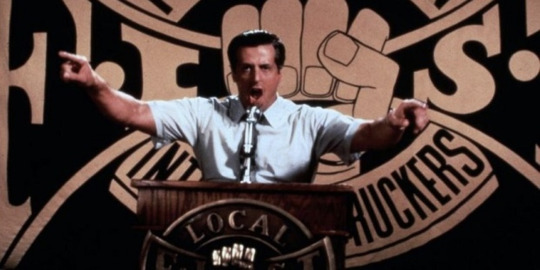
But it was also the year of Paul Verhoeven’s Basic Instinct, the sine qua non of Eszterhas-penned films. And if Sharon Stone’s lascivious leg-cross (Verhoeven’s invention, incidentally, not Eszterhas’) provided posterity with the most iconic upskirt of a blonde in a white dress since Marilyn Monroe’s encounter with a subway grate, that is largely all that remains to us of it today. Well, that and the instantly forgotten sequel (sans Eszterhasian involvement) that already seemed wildly anachronistic in 2006. The original film, its writer, the erotic thriller genre it exemplified, the dunderheaded sexual politics it upheld while attempting to subvert, the whole idea of a mainstream screenwriter having a brand at all (even one as loosely defined as “writer of films you don’t tell your parents you snuck into”), all seem like ancient relics. These are the artifacts not only of a bygone age but of an extinct genus, a whole evolutionary branch that was nipped in the bud so comprehensively that even now scientists might argue over how closely the skeletons of certain bird species resemble the bones of Basic Instinct.
This containment, however, is what makes looking back at the Eszterhas era so fascinating. His brief Hollywood hegemony is a microcosmic event in cinematic history, one with a beginning, middle, and an end (barring some late-breaking epilogue, or a post fade-to-black pan down to an ice pick under the bed). And it didn’t start with his first produced screenplay, for the leaden Sylvester Stallone truckers-union drama F.I.S.T. (Norman Jewison, 1978), although the glimmer of future feats of financial alchemy was already present in the reported $400,000 he received for the novelization. Dawn really broke for Eszterhas, as it did for three of the only other people who could legitimately be termed his peers as purveyors of massively popular, high-concept, low-brow ‘80s sensationalism (producers Don Simpson and Jerry Bruckheimer, director Adrian Lyne), with 1983’s Flashdance.
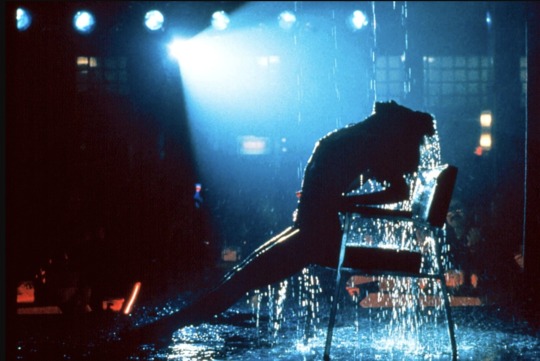
It was an improbable success, less a film than an aerobics video occasionally interrupted by some awkward sassy banter and Jennifer Beals’ popping-flashbulb smile. Its vanishingly thin story, which Eszterhas co-wrote, is of an 18-year-old welder in a steel mill, who moonlights as an exotic dancer while aspiring to become a ballerina—a logline that sounds like a hoot of derision even as an unadorned description—and is full of Eszterhasian hallmarks. There’s the high degree of preposterousness. There’s the gym scene, during which the ladies of the cast grimace and lift weights in full makeup, and while here the frictionless unreality of Lyne’s TV-commerical aesthetic makes the sequence abstract, the peculiar faith in the erotic potential of a workout would recur in the squash sequence in Jagged Edge (Richard Marqund, 1985) and the ludicrous gym date in Sliver (Phillip Noyce, 1993).
And Flashdance also prefigures almost the entire Eszterhas oeuvre in being a story that centers on a woman’s experience and that laudably—if here laughably—positions her career ambitions as at least equal to her romantic aspirations in the mechanism of the plot. But, as elsewhere, it’s a view of women constructed by a proudly unreconstructed man, directed and photographed by men. (Eszterhas’ hard-drinking, womanizing, hellraising, Hunter S. Thompson-of-the-movies persona is enjoyably self-mythologized in his memoir Hollywood Animal.) If anything, what comes across most strongly in Eszterhas’ conception of a “strong woman” is his bafflement when tasked with imagining what such a woman might have going on inside her brain. His filmography may be full of female-fronted titles, and may contain the most famous mons venus in film history, but most of Eszterhas’ work could not be more male gaze-y f it were written from the point of view of an actual phallus, like the closing chapter of his 2000 book American Rhapsody, which is narrated by Bill Clinton's penis, Willard (I am not making this up).

This powerfully eroticized dissociation, this sexualized incomprehension of women as people with interior lives, is the animating idea behind the most Eszterhasian of Eszterhas scripts. But it’s a blank space in which directors, and especially actresses, could sometimes find room to create for themselves. Sharon Stone is genuinely, in-on-the-joke fantastic in Basic Instinct—who else could have delivered “What are you going to do, charge me with smoking?” as if it were an unreturnable Wildean riposte? Costa-Gavras’ Music Box (1989) is by some distance the sturdiest and least dated of Eszterhas movies, a lot due to its comparative sexlessness, but also because of a great, warm, real performance from an Oscar-nominated Jessica Lange. Debra Winger just about wins out in her more thankless role in Costa-Gavras’ first Eszterhas collaboration, Betrayed (1988). And Glenn Close imbues the heroine of the superior thriller Jagged Edge with such shrewdness that it’s almost a liability to the believability of the central deception.
But live by the sword, die by the sword, and when the director/actress combo fails to operate in similar sympathy we get Stone horribly miscast as a… sexy wallflower?… in Sliver, or Linda Fiorentino visibly flailing as a… downtrodden femme fatale?… in Jade, or poor Elizabeth Berkley thrashing wildly about in the neon-lit swimming pool of kitsch that is Showgirls. In these failures, the writer’s almost panicky vision of women as vast, dangerous cognitive black holes is best revealed. But then, mistrust of the opposite sex is only one aspect of the wider mystery that underpins even Eszterhas’ outlier titles: his entire output is preoccupied with how little any of us can ever know anyone.
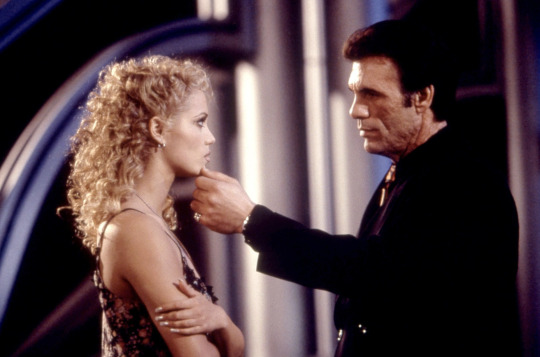
In Eszterhas’ semi-autobiographical Telling Lies In America (Guy Ferland, 1997), a teenage Hungarian immigrant (Brad Renfro) is dazzled by Kevin Bacon's smooth-talking DJ, but blindly unable to work out if he is friend or fiend. Music Box details a lawyer’s dawning disillusionment over her adored father's murderous past—eerily mirroring Eszterhas’ discovery of his own father’s collaboration with the Hungarian Nazi regime. Betrayed has Winger’s FBI agent falling for Tom Berenger’s farmer only to discover he is, in fact, the neo-Nazi she insisted to her bosses he was not, in similar vein to Jagged Edge, in which Close’s lawyer discovers that the lover she successfully defended actually dunnit after all.
Oftentimes, the credulity-stretching ambivalence of these characters is all that powers the suspense, as in the is-she-gonna-kill-him-or-is-she-just-orgasming moments in Basic Instinct. In the misbegotten Nowhere to Run (Robert Harmon, 1993) Jean-Claude Van Damme plays a ruthless ex-con turned valiant protector, his blockish inertia apparently meant to signal that inner ambiguity. More often, it leads to final-act fake-out twists so unmoored to anything like recognizable motivation that they become weirdly weightless, as in Sliver when Stone’s Carly does not know if she’s killed the right man until the final four seconds of the film, and where, had the coin-flip gone the other way, it would still be equally (un)believable.

If it’s part of the egotistical remit of the writer to believe they have an insight into human psychology, it’s remarkable how much of Eszterhas’ oeuvre pivots around how fundamentally unknowable people are to one another. And while that schtick, by which you can’t tell if someone cares for you or is simply a talented sociopathic mimic, resonated briefly at the exact moment when the grasping, solipsistic ‘80s were segueing into the untrustworthy, PR-managed ‘90s, it proved not to have much long-game sustain. Critics had always been sniffy about Eszterhas, who clearly mopped up his tears with massive wads of 100 dollar bills. But when audiences started staying away, like in the Showgirls and Jade-blighted annus horribilis of 1995, the inflationary bubble that allowed Eszterhas to command millions for two-page outlines scribbled, one suspects, on the back of strip club napkins, abruptly burst. The idea of screenwriter-as-auteur, or rather as reliable bellwether of commercial success, proved a fallacy, an expensive experiment that began and ended with Joe Eszterhas, its earliest progenitor, luckiest beneficiary, and biggest casualty.
Glossy, vacuous, adult-themed thrillers were not the only thing going on in Hollywood, and Eszterhas was not the only big-name screenwriter. Shane Black, writer of Lethal Weapon, also commanded astronomical sums for his early ‘90s scripts, but the key difference is that Black wrote in the register of the franchise-able action-spectacular blockbuster that would eventually trounce all others as the Hollywood model for the future. Black has gone on to become part of the Marvel machine as a writer and director, while aside from one Hungarian-language period film, Children of Glory (Krisztina Goda, 2006), Eszterhas’ contribution to the pop cultural landscape post-2000 has been in the form of self-aggrandizing memoirs, or highly public fallings-out with celebrities, like Mel Gibson, of a similarly corked vintage.

The tastemaker point of view has historically been to consider Eszterhas among the worst things that ever happened to Hollywood—so much so that disdain-dripping sarcasm seems to be the fallback for critics summarizing his impact. But while no one is going to make the case for the man’s filmography as some sort of artistic landmark, the Eszterhas era did represent one of the last gasps of a Hollywood that believed, however misguidedly, in personality over product, when the idiosyncrasies, idiocies and ideologies of a single person—a writer at that—could, with studio backing and a 1,500 theater release strategy, influence the cinematic development of an entire generation. That might not have seemed like a good thing but retrospect, like cocaine, is a helluva drug and in 2019, with blandly anonymous, market-tested content churned out by mega-corporations bi-weekly to siphon your hard-earneds away, the kind of salacious tackiness Eszterhas represented feels oddly adorable, even quaint. Now that singular talents—even the obnoxious and objectionable ones—who could make decent returns on mid-budget, adult-oriented mainstream fare, have been steamrollered by infantilizing, monolithic billion-dollar mega-franchises, it’s hard not to be a little nostalgic for the vanished hiccup of time when Hollywood briefly uncrossed its legs for Joe Eszterhas, and Joe Eszterhas told us all what he saw.

24 notes
·
View notes
Text
Hidden Gems of the Silver Screen (And, to a Lesser Extent, the Telly)
It can’t have escaped your notice that the majority of my more recent posts (and fuck knows I’m not posting regularly at the moment) are about movies and TV. The reason for that is pretty simple: 2019 has, surprisingly, yielded some great movies and TV... and also some really torrid shite. On the one hand, films like Ma, Brightburn and The Perfection continue to breathe new life into the horror genre. On the other hand, sci-fi as a cinematic and televised thing continues to ignore its actual audience in favour of sniffing its own farts in a sound-proof chamber designed specifically for next-level virtue-signalling. One thing I will say about the dreck of 2019 is that it’s interesting dreck, at least so far. Another Life, for example, isn’t just bad: it’s mind-bogglingly, fascinatingly bad, as though someone set out to make the worst TV series imaginable and accidentally created a portal to another dimension made entirely of crap.
With all the amazingly wonderful and transifxingly terrible visual media on offer lately, it’s easy to forget that there’s a rich repository of films and TV series from just a few years ago that you’ve probably never watched. You see if you, like me, are a snooty, card-carrying member of the elitist intelligentsia, you probably missed films and TV series that looked dumb as soup on the surface on the grounds that they weren’t worth your time. Luckily for you, I’ve dived nose-first into the detritus of our dying culture, so you don’t have to, and I’ve ferreted out the diamonds from the pig-swill. Without further ado, I’d therefore like to present my list Easily Overlooked Gems.
1. Mandy
The phrase “Nicholas Cage stars in a sword-and-sorcery rape/revenge thriller” does not inspire confidence. It’s therefore easy to ignore Mandy and the promptly forget it ever existed. Which is a shame, because it’s kind of a work of genius. The plot is exactly what you’d expect: a cult kidnaps, rapes and kills Cage’s girlfriend, Mandy, and Cage sets out on a mission of revenge culminating in a blood-bath. The nature of the revenge quest is what puts a sting in the film’s tail- or tale, if you’re feeling puntastic. You see, a lot of the bad guys exist in a constant hallucinatory haze after taking a drug that sent them mad after one dose. In order to fight on their level, Cage has to take a dose too. As a result, the world around him slowly but surely transforms into a nightmare landscape that looks like a cross between a D&D illustration and the cover of a heavy metal album and his grubby, personal mission of fury takes on the unmistakable resonance of a Conan-esque hero’s quest. By the end of the film, you have to wonder if Cage has actually slipped into some sort of alternate dimension or if he’s just lost his game-pieces completely. In places, it’s nearly as painful to watch as Landmine Goes Click (crikey, there’s one for the history buffs) but it looks and feels like Beyond the Black Rainbow. Worth your attention just because of how weird it is. I give it a solid four-out-five decapitated rapists.
2. Baby Driver
Nothing about Baby Driver suggested it would be a good film: the way it was advertised as a car-chase movie trying to be cute; the stupid title; the fact that it came and went through cinemas like a fart in the night. Which is a shame, because it’s secretly brilliant. It’s a highly stylised crime film populated with the archest archetypes money can buy (to the point where some of the dialogue has a weirdly beat-poetic feel to it). It’s saturated colour palette and off-beat affect actually have something of a full-colour Jim Jarmusch flick about them. The hook, of course, is that the lead character (only ever referred to as Baby, because he’s got a punchably youthful face) has tinnitus and therefore has to listen to music constantly to drown at the buzzing in his head. The practical upshot of this is that a) every single scene is overlayed with surprisingly great and situationally appropriate music and b) he goes through life like he’s always dancing, so his way of moving lends to the film’s easy-going sense of flow. It also explains where his preternatural driving skills come from (I mean, not really, but within the context of the plot): he’s used to sliding effortlessly into patterns and rhythms because of the music thing. All of this could make a terrible film, of course, but execution is everything and, to everyone’s surprise, especially mine, this flick was executed with an astonishing level of panache. I rate it ten out of ten grizzly motor way pile ups.
3. Nightflyers
It’s not just films that get overlooked as the tide of culture washes back and forth, like a great big sea of effluent. TV series also vanish unduly into the dustbin of history. Case in point, the criminally underappreciated Nighrflyers: Netflix pre-Another Life sci-fi offering that was actually good. It’s a pretty classic set-up: a group of mismatched wing-nuts on a spaceship, all of whom have secrets that that will threaten to tear them apart while they try to make contact with an alien life-form. What elevates Nightflyers is just how fuck-uped the cast are. There’s an angry British psychic whose spent his whole life in captivity in case he goes full Scanners on somebody’s head, a guy who only ever appears as a hologram for reasons too twisted to explain here, his evil mother whose uploaded her mind to the ship’s computer and gone batshit crazy, a genetic superbeing and a hacker who can send her mind into computers via a dodgy implant and who may or may not be drifting out of touch with the human condition. It’s great. 6 and half billion out of 7 billion monkeys, boiling in the void.
4. Hardcore Henry
No, I don’t know who thought that title was a good idea either, but the point is that Hardcore Henry has no motherfucking right to kick as much arse as it does. It was clearly made on a budget that would embarrass a Youtube shampoo commercial, but it just flat-out rocks. Shot entirely in first-person, it follows the adventures of a mute cyborg as he seeks revenge against the bastard psychic entrepreneur who first built him then tried to kill him. Along the way, his main ally is a dude who keeps dying and coming back to life in a series of identical bodies but with radically different personalities and haircuts (this is eventually explained, but I’m not going to spoil it for you). It’s premise is demented, it’s surprisingly well-choreographed and its soundtrack is an aphrodisiac for your ears. Also, Tim Roth is in it, so that’s just yer seal of quality right there. It came out to a lot of fanfare and many, many cinema trailers back in the day and was then promptly forgotten about as soon as it launched. So I’m dragging it kicking and screaming back into the limelight. It’s on Netflix right now, so go watch it. I rate it a solid 11 out of 15 creepy duplicates of Tim Roth.
5. Upgrade
Another lesser-known film about a cyborg. Unlike Henry, however, this cyborg’s life doesn’t so much ‘rock’ as ‘suck balls’. He gets crippled and then ends up with a sentient computer chip in his head that allows him to remote-control his own body despite not having a working spine anymore. Naturally, his experimental tech attracts the attention of some unsavoury characters and he and his brain-chip have to work together to figure out what’s going on, often through a series of ultra-violent, gory fight-scenes that horrify the protagonist himself. Of course, all might be well, except that the head-chip is a homicidal little shit that clearly has its own agenda. I give it at least 0000 0111 out of 0000 1001 painstakingly restored vintage kill-bots.
6. The Tick
The Tick isn’t as overlooked as everything else on this list, especially since there have been a couple of previous televised incarnations of the franchise to lay the groundwork. However, I still feel like the modern iteration doesn’t quite get the love it deserves, so I’m throwing it out here. Following the adventures a mad, amnesiac and possibly stupid superhero and his neurotic sidekick, The Tick explores a world where superheroes aren’t the paragons of good from classic comics, the corrupt psychotics of The Boys or Watchmen, or the eternally struggling, walking moral life-lessons of modern cinema. Instead, they’re just ordinary people operating at various levels of competence/incompetence and mental illness and working within a bureaucratic, wildly inefficient framework. That might not sound like a recipe for a successful TV series, but it really is. Drawing out the mundane, human side of heroes and villains against the backdrop of cataclysmic, civilisation-threatening events makes for infinitely compelling and very, very funny viewing. It’s kind of doing for the superhero genre what Futurama did for sci-fi a few years back. It’s also where the phrase and/or popular song ‘seven billion monkeys boiling in the void’ comes from. My rating is four out of five sapient, homosexual boats (which will make sense when you watch it).
7. The Void
Amid the high-budget horror extravaganzas of recent years, it’s easy to forget about the void, which feels like the best story H.P. Lovecraft never wrote and looks like David Chronenberg tried to adapt a Heironimous Bosch painting... in the ‘80s. The actual plot concerns a group of people getting trapped in a hospital by murderous cultists and discovering dark secrets and, arguably, a whole other dimension in its basement. You’re not exactly there for the plot though: The Void is a mood-piece and an exercise in visual FX craftsmanship. You’re there to drink in the atmosphere and see what each new cosmic horror looks like. I am delighted to award it ten out of ten unspeakable whisperers in the darkness. That’s enough for two barbershop quartets, an emcee and a supporting act.
8. Happy Death Day
It’s Groundhog Day but as a horror film starring a really annoying lass in her late teens has to keep dying horribly until she learns to stop being such a terrible person... and also kill her murderer with a little help from her newly-minted, non-cunty friend. There’s a sequel that I haven’t seen yet, but the original is a low-key, oft-overlooked delight. I give it 9 out of 11 suspiciously similar corpses.
#Secret Diary of a Fat Admirer#films#tv shows#movies#Mandy#Baby Driver#Nightflyers#The Tick#The Void#Tick#happy death day#Upgrade
13 notes
·
View notes
Text
My hella long review and thoughts on Avengers: Endgame (2019)
Warning – spoilers ahead.

For the past 11 years Marvel fans have grown up watching the mighty Avengers on screen together and apart. These films become more than just films when they come to an end, they become a part of our lives – they are a part of our lives, just as much as the cast and crew. Whether you were 12, 20 or even 32 when you went to the cinema in 2008 for the first MCU film, as the years went by you continued, and today you went for the final time. These characters are not just some fictitious superheroes, they are our role models and people whom we looked up to and learnt from. Steve Rogers taught us to never give up, Tony Stark taught us compassion, Thor Odinson taught us bravery, Natasha Romanoff taught us to be strong, Clint Barton taught us loyalty and Bruce Banner taught us to accept ourselves . So rarely do films have the opportunity have such a deep emotional connection with audiences. We know these characters, we know their stories and we experienced their journeys as we were growing and maturing. So it suffices to say the stakes were very high with this one. After 11 years we needed an ending which did justice to the characters, their stories and the challenge which has been building up for the past 11 years.
In Endgame we are drawn into the depressive state each Avenger is in after losing to Thanos and losing their loved ones. This immediately captures our Avengers in a new light, in a state of struggle unlike anything before and even hopelessness. Audiences here can sense the more serious tone of this film and even more so the finality of everything that is to come. Having decided to kill Thanos once and for all, the Avengers travel to find Thanos and within the first 10 minutes or so, Thor (having learnt from Infinity War) takes his hammer to Thanos’ head. This is the first act trigger a series of references to the previous films.
“I can do this all day”
After this moment we move five years forward. Whilst Tony is happily living his married life with Pepper and daughter Morgan, Thor is now overweight and hiding away playing Fortnight. Following the events of Ant-Man and the Wasp, Scott returns from the quantum realm to realise what has happened and from there hatches a plan – the Time Heist. Realising the Pym particles can in fact take the Avengers back in time, they decide to steal the infinity stones in the past before Thanos gets to them. This is the heart and soul of the film. The one thing missing from MCU is time travel. Time travel in film can go in two ways, either it will be a disaster or in the case of Endgame – poetic cinema. The reason time travel works so well here is firstly because it is the natural progression for the film to take, and most importantly it gives each of the original six Avengers their moment. The stand out moments in particular are: Steve going back to 2012 Avengers where he’s having to fight himself saying the famous line “I can do this all day” to which present Steve replies “Yeah I know,” as you can imagine given the gravity of that line and situations in which we have heard this, here it was simply hilarious. This is how to add comedy elements to what is a gripping, emotional, action-packed drama. Another stand out scene is the homage to the iconic and I mean ICONIC Winter Soldier lift scene. As audiences eagerly anticipate another fight where Steve will diminish the Hydra agents – instead he simply whispers “hail hydra” and escapes with the mind infinity stone. This was again hilarious and pure genius. Bravo! As Tony and Scott lose the Teseract, Tony and Steve decide to go back to the 70s to retrieve it as well as the Pym particles. Here Tony finally comes face to face with his Father. After the father issues we see him go through in the early films and the father figure he has become to Peter Parker – these scenes provide a powerful moment as Tony comes to peace with his Father. In the meantime Steve accidentally ends up in none other than Peggy Carter’s office where he earnestly looks through some blinds, revealing Peggy herself. Endgame does not holdback in pleasing fans whilst successfully executing these emotional moments in such simplicity.
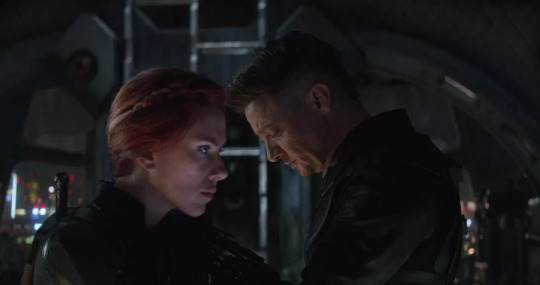
Over in Asgard, Thor is able to speak to his mother once more and retrieve the aether, though it is with Clint and Natasha, audiences will shed their first tear (or full blown cry if everything else already had them tearing as it did me) as they both go after the soul stone. Fans will recall from Infinity War to get the stone you need to give a soul – a simple exchange. As Clint and Natasha fight out who will be the one to sacrifice their life, ultimately it is Natasha who takes the fall – literally. And it is here audiences are left speechless as we see one of the first original six Avengers fall to their death. This was nothing short of heart-breaking, but yet so powerful given the history of the dynamic duo, there was no better way to close the arc of their friendship.
“There has not and perhaps never will be something of this magnitude ever again on screen.”
As the remaining Avengers return safely back to the current time, Thanos from the past finds out about their plans and invades the current time period. Each Avenger takes their stab at bringing Thanos down, but ultimately it is Steve and his half broken shield which stand alone facing Thanos and his vast army. Unlike most of the MCU films, Endgame should be appraised for its cinematography, one of the many beautiful shots include this scene. if anyone would have the guts to take this on by on their own, it would be Cap. But then we here “on your left,” revealing Sam and Bucky and then slowly all of our lost Avengers appear as Doctor Strange motions them to the war ground. In this moment Steve calls out “Avengers Assemble” – music to the ears of fans, at last we hear the phrase. This begins the most epic battle in cinematic history. It is exhilarating, it is breath taking, it is edge of your seat cinema, there has not and perhaps never will be something of this magnitude ever again on screen. The entire build up of the film makes this fight the spectacle that it always deserved to be.
Of all the brilliant moments during this battle, there is one which again will be historic in film forever. As Thor struggles with Thanos, we see his hammer rush to hit Thanos only to swing back past Thor and into the hands of… CAPTAIN AMERICA. Audience erupts, cheering, clapping. if MCU was building up to anything in the last 11 years it was this moment. Iconic and legendary. I had goosebumps watching this scene as Steve yields Thor’s hammer. There truly are some very special moments in cinema such as the “i am your father” from Star Wars – where something happens which no one expects, where your mind and body at once feel this rush of sensation, where the magic of cinema is truly felt – with Endgame we had the privilege of experiencing this. This is not something you will get on a second viewing. I think the sheer gravity of that has to be recognised and of course the brilliant execution of this entire scene. Fans have always known Steve is worthy and there are no words in the english language to describe what was felt by all to see this moment for the first time.
The battle comes to a close with Tony taking the infinity stones, “I am Iron Man” he says, as he snaps his fingers. The power of the infinity stones being unbearable leads us to the death of Tony Stark. As the character who is known to act in his own self-interest and is deemed to be selfish. Tony does the most selfless act bringing his arc to a successful close. There was no other way this could have panned out, this brings Tony’s character full circle, we see the growth and development throughout the years, and the empathetic, selfless man he has become. As the character who started this entire journey it is right for him to bring it to an end. Given all this, and the love fans have for Iron Man and Robert Downey Jr – this again is of course the tear jerking scene. Followed by his funeral which was executed with perfection, brining back Harley from Iron Man 3.

Though what is arguably one of the best character endings in any film franchise of this scale has to be given to Steve Rogers. The writers truly knew what they were doing with this one. As Steve prepares to go back into the past to return the infinity stones, he exchanges an all too familiar line with Bucky, “don’t do anything stupid until I get back” says Steve, to which Bucky replies “how can I, you’re taking all the stupid with you.” Of course fans will be very aware of the role reversal since Captain America The First Avenger taking place here. As Steve travels to the past, everyone awaits for his quick return, though Steve has other plans. He does indeed return but having instead gone back lived his life with Peggy, he returns an old man. The film ends on Steve Rogers finally getting that dance with Peggy, with “It’s Been a Long, Long Time” playing over the scene. Marvel fans will know this is the exact same song which Fury plays in Steve’s apartment in Winter Solider. Being a fan of Marvel and in particular Captain America, this is the pièce de résistance of the film. Through every single film featuring Steve, we are constantly reminded of their tragic romance, and the dance they never shared, finally and I mean finally, Steve gets the ending he deserves. As the leader of the Avengers and the character who puts everything on the line for the greater good, there could not be a greater way to end his arc. This was perhaps the only part of the film where audiences would have cried out of joy, to see this iconic (I know i’ve used this word so many times) moment happening at last. And of course it was a brilliant ending to the entire film.
If I was to make any change however, to truly tie Cap’s story up in a bow, it would be to provide more screen time between him and Bucky. I think where this film fails is providing Bucky with justice. The relationship between Bucky and Steve is of paramount importance in all three Captain America films, we see how deeply connected these characters are. They are life long best friends and are willing to die and kill for each other. There is no other relationship of this magnitude in MCU (in my opinion anyway), they are a fan favourite and given the past films they are the dynamic duo with such a strong bond. There were moments in the film where light could have been shed to show us this beautiful friendship once more. Firstly, in the battle scene mentioned above, instead of Sam saying “on your left” I believe it would have been much more powerful to instead have Bucky entering saying “we’re with you until the end of the line.” This is undoubtedly one of the most crucial and memorable quotes from the entire MCU which was missed (though I have changed the “I” initially in the quote to “we”). Finally, and for this reason only am I prevented from giving this film a 10/10 is that, as Steve returns in his old age, it is Sam who has the finals words with Steve. Given the relationship with Bucky, it would have only been right for him to have the final words with Steve before the shield is passed to Sam. This would have been the ending Steve and Bucky deserved.

Ultimately, what has been achieved with this film is beyond brilliant. I am struggling to find the words to give the film justice. The level of attention to detail in this film is unlike any other I have ever seen. To be able to successfully, in almost every single scene pay homage and reference to the previous films was just remarkable. I really believe this is very difficult to do successfully, in a way in which not only brings audiences nostalgia but a new and fresh level of excitement. This coupled with the way in which Endgame mirrored Infinity War is what astonished and amazed me most about this film. And this is why I believe it is poetic cinema. Superbly structured into three acts, where not only do we see the characters we know and love having to push themselves one last time; we see them grow to their very best potential, their defining traits in the small moments, and their evolved relationships with each other. How such character development and nostalgic moments was married to a gripping and exhilarating narrative, which was equally character and story driven (not to forget the great score and cinematography) is an accomplishment in itself. Chris Evans, Robert Downey Jr, Scarlett Johansson, Chris Hemsworth, Jeremy Renner and Mark Ruffalo, all provided sensational performances. Arguably the best superhero performances we will see. This is their swan song, and had it been theatre I am sure every single member of the audience would provide them with a standing ovation.
“It was a rare cinematic experience, amplified by the fact that it was 11 years in the making. To be a part of that, is to be a part of film and cinema history.”
There are certain times in your life when you watch a film and it resonates so deeply with you, that when you leave the cinema it stays with you. It’s as though you have a chemical connection with the film, you are simply left in awe and wonder. I call it movie magic. So rarely do we get to experience this with a film, that when it does happen, we wish we could collect that moment into a snow globe and have the ability to dip inside and out of it, to feel all that again. And just when you think this may never happen again or when you have accepted the rarity of it, a film comes along and you are able to revel in that feeling once more. Avengers Endgame is that film. It was a rare cinematic experience, amplified by the fact that it was 11 years in the making. To be a part of that, is to be a part of film and cinema history.
Thank you to the Russo Brothers, to Chris Evans, Robert Downey Jr, Chris Hemsworth, Scarlett Johansson, Mark Ruffalo, Jeremy Renner and of course Marvel and all the cast and crew, for allowing us to be a part of this and for being a part of our childhood.
9/10
#avengers endgame#avengers#chris evans#Robert Downey Jr#chris hemsworth#Scarlett Johansson#mark ruffalo#jeremy renner#captain america#Iron Man#Black Widow#natasha romanoff#hawkeye#clint barton#hulk#bruce banner#tony stark#Steve Rogers#bucky barnes#Winter Soldier#avengers age of ultron#avengers infinity war#film#movies#review#film review#avengers endgame review#marvel#comics#superheroes
34 notes
·
View notes
Text
Exclusion within Hollywood: why are minorities overshadowed?

With next year’s Oscars approaching, its time to consider at why in the 21st Century at why minorities are still non-existent throughout award ceremonies.
Throughout the history of the Oscar’s, it has always been dominated by white actors and actresses, however, as we are now nearly a quarter of the way through the 21st Century, why are minorities still being overshadowed? It came to public attention in 2015 with the hashtag #OscarsSoWhite, which started to trend on Martin Luther King day, the only film within this particular Oscar year was Selma for best picture. This momentum continued in 2016, when Will Smith was overshadowed again and boycotted the Oscars in protest and the hashtag trended again on Twitter. His wife also joined in with the boycott. “This year’s list of Oscar nominees passes over popular, well-reviewed performances in the movies Creed and Straight Outta Compton’” The President of the Academy and Cheryl Boone Isaacs who represents the board behind the Oscars have said “I am both heartbroken and frustrated about the lack of inclusion” and “we have implemented changed to diversify our membership in the last four years… we need to do more. And better and more quickly”
This topic has always been a conversation focus as many films have white lead characters, people of colour has been tried to be cast within major roles but there are changes still being need to be made due to there being a fear of films not being as successful at the box office if a person of colour was cast rather than a white person, this almost passive racism is unfair as here have been major films with black leads which have been a box office hit. Within The Hollywood Jim Crow “Hollywood decision makers view movies with black casts as being economically risky… and for that reason they restrict them to small budgets.”
UCLA has published a report looking at diversity within Hollywood and the results are shocking, in 2016 only 13.9 percent of lead actors within the top films were of minority’s and only 1.4 out of 10 lead actors within the film industry are people of colour. This is quite a shocking statistic when compared with the 86.1 percent of lead actors were white in 2016. Some examples of films which were released with African Americans as the lead characters are Central Intelligence with Dwayne Johnson and Kevin Hart, Hidden Figures with Taraji P. Henson, Octavia Spencer and Janelle Monae and Moonlight starring Mahershala Ali, Naomie Harris, Trevante Rhodes, Alex R. Hibbert.
Hollywood is a symbol of American motion picture, but it is also seen as the worlds as well. Movies produced by Hollywood influences moral, cultural and political issues within society but an issue is some of the impacts can give narrow mindfulness as well. Many viewers think Hollywood spreads a negative message of themselves due to the racial discrimination some movies portray. The roles of minorities are slowly improving, Asians, Latinos and Native Americans are still under represented, together they make up 9.3 percent of roles shared, and Native Americans are the lowest within the underrepresentation with them making up 0.5 percent in total.
In a recent book published titled The Hollywood Jim Crow: The Racial Politics of the Movie Industry, it offers a provocative lens of understanding how the industry’s racial imbalances are and the lack of people of colour in the top studio roles. This book questions the extent in which Jim Crow exists within the entertainment sector today. The Hollywood hierarchy isn’t identical to the legal segregation which existed but there is still many principles which remain the same, “that Jim Crow was a legally enforced [system] that affected everyone – their mobility, their bodies, their ability to find work”
As racism was law, cinemagoers would typically see African Americans depicted in cruel stereotypical movie roles: servants, rapists, and unintelligent slaves. It wasn’t until the 1930s when black actors were able to find work onscreen within Hollywood, however, when they did it was mostly song and dance genre. Hattie McDaniel in 1940 was awarded an Academy Award and was the first African American actor who received one for her role as Mammy in Gone With The Wind. However, she did have to sit at a separate table compared with her white co-stars because the venue didn’t allow blacks within the building.
Within early Hollywood, they would use black characters to represent different stereotypes and have limited screen time and these stereotypes persisted throughout the twentieth century when attitudes to minorities were rife throughout Hollywood and society in general. Blaxploitation is a subgenre of the exploitation film which emerged in the US in the early 1970s. The films were popular, but received backlash because of the disproportionate numbers of the stereotypical film characters which showed questionable motives which included criminals, but it is the first genre in which black characters are seen as the hero rather than the sidekick. An example of a film within this genre is Shaft where the lead character has to go and save a Harlem mobster’s daughter from Italian Mobsters who kidnapped her.
Other examples of stereotypes are; Asians are usually portrayed as nerdy and Latinos as fiery. Within early Hollywood, Black and Asian people were targeted the most, Nancy Wang Yuen who is a sociologist wrote “racism, in the form of job exclusion and racially stereotyped roles, has defined Hollywood film industry since its birth in the 1900s”. Disney has even had examples of racial stereotypes, with Aladdin the Arab protagonists are poor and dumb, in The Lion King the hyenas speak with an African American dialect. This proves there is racial discrimination in movies for all ages and another problem with characters of ethnicity is their characters seem to the ones who die first and their narrative ends abruptly.
The production teams of Hollywood hasn’t shy away from the fact they know they are reluctant to hire minority actors but instead of using an all-white cast. This is an issue which is ongoing and spoken about almost daily, the directors and the production teams need to start to change the racial barriers and start including more diverse cast members. There are many branches within the Hollywood media; television, music, news and most important of all the film industry where the social inequality is evident and it needs to start changing as there is a need for more minorities to be cast in major film roles.
There is a slow change within Hollywood, about how people of colour are portrayed, and the numbers matters. There are other aspects within Hollywood which are evolving as there are more women, people of colour and LGBTQ behind the camera as directors, writers and producers. This is arguably the most invisible aspect of the industry and the less likely to receive any attention when it is awards season. Spike Lee has earned himself his first best director nomination with BlacKKKlansman, there are critics which see this shift as a result of having more women and people of colour within their voting pool. With other films as Black Panther and Crazy Rich Asians 2018 could have been seen as a year of diversity within the cinema industry.
The Oscars are important to people and the event where the first-time indigenous actress from Mexico and a veteran African American director is praise-worthy. “everyone has their own way of coping with the idea that the society is not racially inclusive”

1 note
·
View note